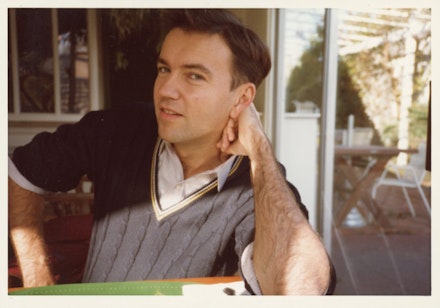
When Diego Cortez died on June 20, 2021, I felt the need to memorialize him in some way, because so much of what he did was ephemeral, although no less important for being so. Diego was a catalyst in the literal sense of the word: something that precipitates or facilitates a change. He touched and changed a great many lives, as the many contributors below attest. His 1981 New York/New Wave show at PS1 ranks with the Armory Show of 1913 as one of the most consequential art exhibitions of the 20th century. In the ensuing years he curated over 100 additional exhibitions.
Diego arrived in New York at the dawn of punk and he remained true to that sensibility all his life. The art world was his medium, first as a performance artist, and later as a writer and editor, a curator and gallerist, a music producer and promoter. In my mind Diego constituted a trio, along with his friends and sometimes rivals Edit DeAk and Rene Ricard: shockingly intelligent outcasts who dominated the New York art scene and nightlife of their era. Fearsome and outrageous, they simply saw and knew and understood more than anyone else. The seriousness with which they treated art I have not encountered since. It’s the reason one came to New York: smart people. Unlike so many of his peers on the scene, Diego was (usually) kind, encouraging, and approachable. His literary interests made him a great supporter of little-known writers, including Kathy Acker, Cookie Mueller, and Duncan Smith.
In later years his focus turned to music, photography, folk art, and so-called outsider art—in addition to his first loves of film, painting, sculpture, and conceptual art. Since the mid-’90s Diego led a peripatetic life, living in Puerto Rico, Brazil, Tokyo, New Orleans, a loft in Harlem, and an apartment in Brooklyn, before finally settling in North Carolina, where he ran a gallery (Partobject, in Carrboro) with his sister Kathy Hudson. I always liked how he did not tie himself down to New York and its culture.
In his final years Diego was an informal guest lecturer in graduate seminars at the University of North Carolina at Chapel Hill. He was a challenging and captivating speaker, and outspoken as ever. In his final class visit, half the students walked out on him and marched to the Chair's office to complain. The professor, his friend elin o’Hara slavick, who invited him, was removed from that seminar and subsequently resigned her position. Somehow I am heartened to think he ended his career the way it began: provocatively.
–Raymond Foye
Al Diáz
Remembering Diego
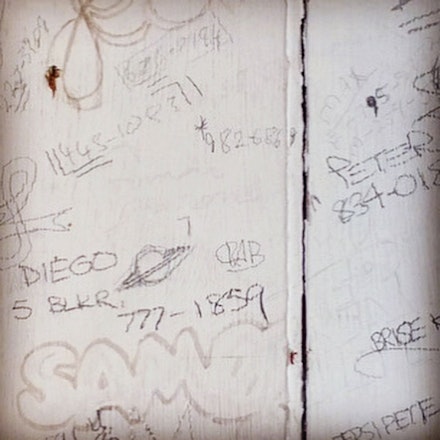
By 1978, when I was about 19, SoHo was in full swing commercial development. West Broadway, Prince, Spring, Broome, and Grand streets were now lined with galleries, boutiques, and restaurants. The streets running north and south, including Mercer, Greene, and Wooster, still showed signs of an earlier period, when light industry was the primary activity in the area. They were poorly lit and still paved with cobblestone. Aside from the Anthology Film Archives, the Wooster Group theater, and some lesser-known galleries, these streets remained less populated. Trucks, loading docks, shipping debris, and textile scraps were a common sight. The area was replete with luminaries of various social strata: musicians, artists, writers, actors, filmmakers who made up most of its inhabitants.
Then, SoHo had a sense of neighborhood with a host of familiar characters you’d regularly see at parties, clubs, openings, and other events. Downtown New York City was still affordable for young people and conducive to a Bohemian lifestyle. Being a restless young New Yorker without absolute direction or objective, I frequently roamed the streets in search of adventure, entertainment, and activity. I first met Diego Cortez on one of these jaunts. A few friends and I had set up a loading skid vertically on a wall of a building that probably now has a surveillance system to prevent the type of mischief we engaged in. We were using the skid as a practice target for hurling Chinese throwing daggers. The game had been on for a while when a tall, pleasant-faced young man wearing Ray-Bans stopped with his associate to watch us. The man had a Super 8 movie camera tucked under his arm.
“This would be great for my Elvis movie,” he said (as if we knew about his Elvis movie, which I later discovered was titled Grützi Elvis). “Do you guys mind if I shoot you throwing the knives?” he asked.
We all agreed to being filmed and continued our game, perhaps more fervently for his camera. After they had the footage they needed, the tall fellow introduced himself as Diego Cortez, and to show his gratitude, invited us to a party later that evening at a nearby loft. So, a few friends and I showed up to an address on the piece of torn off notebook paper. I remember being starstruck as we saw Brian Eno walk out of the building as we approaching.
Me, very excitedly: “Hey, you’re—”
Eno, as he skirted away half laughingly: “No, I’m not the guy…”
I remember staring as Eno faded away and thinking to myself, I wonder who this Diego guy is? After that night I started to notice Diego at clubs and parties, and stopped by his office once on Bleecker Street concerning an article in his publication. I would later learn of his association with Jean-Michel Basquiat and his involvement with the now-legendary New York/No Wave MoMA PS1 art show, when I played music with Elliot Sharp’s ISM. Although we never became super close friends, we certainly had quite a few friends in common and would remain in good standing for decades to come. I saw Diego alive for the last time in 2017 in London when Basquiat’s Boom For Real exhibition opened at the Barbican. He took a break from the video interview he was doing to say hello. Diego Cortez took with him a great deal of sought after, first-hand Downtown New York knowledge … history and lore that cannot be reclaimed.
Alanna Heiss
“Time to Go … (for Diego)”
The young Diego bore a slight resemblance, more successfully at night, to Elvis Presley. The old Diego bore a passing resemblance to fat Elvis, although our Diego never reached the massive proportions of that great performer.
I met the young Diego in 1973 at the Clocktower, an alternative space that I founded and ran from 1972 until the building was sold to a developer in 2018. The asking price for the multilevel apartment located in the old Clocktower space designed by Stanford White, (the location of over 1000 shows over the last 50 years) was 36 million dollars. However, in the early years, our not-for-profit art space had a total annual program and staff budget of about 27,000. Diego was friendly (sleeping with) some members of the young and attractive Clocktower team and was frequently found hanging out in our offices and the many disheveled rooms used as studios and production space for artists of that time. These artists included Vito Acconci, Lynda Benglis, Kenny Scharf and his gang. I was only three years older than Diego but was the designated grown-up in the space. It was clear to everyone that out of our little budget, Diego, who did nothing but talk on the phone to his friends and arrange for complimentary tickets to performances at hip bars, was not going to be paid. This certainly didn’t matter to Diego, who was already a superb hustler and a much sought-after presence at concerts and gatherings.
Diego’s relationship to concepts of necessary living costs were interestingly flexible and somewhat unusual. He expected to live rent free and to spend nothing on boring necessities such as a telephone, electricity, taxes, and food. However, entertainment, taxis, drugs, and booze were important. Years later, when Diego and I worked together, I spent many hours drafting and editing budgets for the NEA and the NYSCA for his projects which could represent expenses of this nature.
Naturally, Diego was a desired companion by many of the most adventurous artists, musicians, and photographers of the ’70s and ’80s. He was smart and a good critic, bold and energetic and completely committed. Most importantly, he was taking and making the same chances and choices that they were. And he was a lot of fun.
For me, Diego represented a trustworthy native guide to the artistic underworld which remained ultimately inaccessible to me, but acutely exciting and important to understand. When he proposed the New York/New Wave show to me for PS1 in 1981, I didn’t need my arm twisted. That exhibition, along with the opening Rooms exhibition, became the defining exhibitions of PS1’s early remarkable history, primarily because this massive show of over 500 artists (to which Diego continued to add, replace, remove, etc.) established the crucial relationship and crossover between music and art of that time.
Doing an exhibition with the young Diego was not for the faint-hearted. He was completely uninterested in the process of assembly, transport, shipping, insurance, and labels, which are the scaffolding of any large group show. He was a consummate liar, and frequently misrepresented crucial details that he either hoped would come true or didn’t care about. In this, he was more similar to the manager of a rock band (Diego successfully acted in this role several times) than the curator of an art exhibition. In years to come, Diego came to recognize that his efforts were best spent on artist projects and smaller shows concentrated on really good works by one artist. He was usually able to isolate key elements of the artists’ concerns and through his presentation ensure that the artistic impulse remained alive and throbbing. I considered him a non-conventional but inspired show organizer.
I never worked on another show with Diego. We kept up a relationship and when we spoke, I would casually suggest another adventure and he would usually update me and mention a current idea he felt might be of interest. I consulted with him on many decisions important to me and often took his advice. We shared countless friends … Keith Sonnier, Joey Ramone, Lawrence Weiner, Dennis Oppenheim, Laurie Anderson… and we remained in touch throughout his life. I spoke to him three weeks before died. He was greatly upset about the death of Bill Fagaly, a much-loved curator at the New Orleans Museum of Art, where Diego served loosely as a curator of photography. Neither of us spoke of his own approaching finale but for the first time in 50 years, he didn’t propose a new project or idea to me, and I didn’t ask him to do another show.
I hope that, like Elvis, there will be continued sightings of him.
Alba Clemente

JAMES CURTIS ALIAS DIEGO CORTEZ
I used to joke with him that, choosing that name, he had given himself a destiny.
His love for traveling and his conquest of the art world.
Everyone loved him; his intelligence, his knowledge, his humor, his sensibility, his openness, etc…
The only other thing he really enjoyed as much as art was food.
He used to say, after his third plate of delicious spaghetti a vongole, in a restaurant in Capri, Italy,
“It’s okay … I can still see my feet!’
Referring to his tummy.
WE MISS YOU DIEGO, THANK YOU SO MUCH FOR ALL THE GREAT TIMES WE HAD TOGETHER
Ann Magnuson
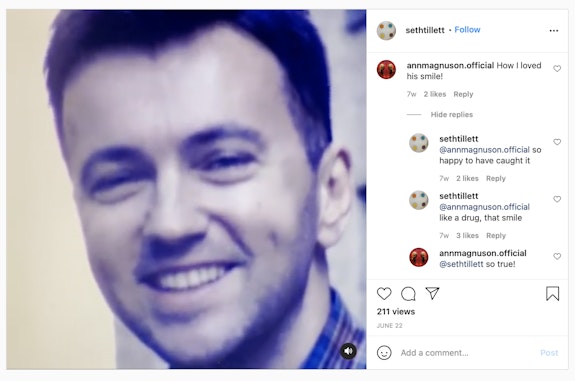
I had such a crush on Diego. I’m pretty sure we first met at the Mudd Club. But maybe it was at Club 57? He came there often in the early years—1979 and 1980—when I was the manager and was also organizing art installations, performances, and other events. Or maybe I first met him at CBGB or Max’s while watching the now-legendary bands we all loved? Or was it through the myriad of friends we shared? Or maybe it was from just bumping into him on the street? That happened a lot.
It was easy to become friends with Diego. We hit it off big time. We were both talkers and eager to share all the things we had learned in school, or knowledge acquired over the years, or just sharing something we saw that day or night that excited us. Finding kindred spirits in the downtown art and music scene at that time in New York was such a thrill. Hanging out with Diego was an extra special thrill. Diego was super cool and super smart, and so plugged in! Every conversation we had was exciting. He was one of the first people I knew who dressed in the vintage 1960s suits and skinny black ties that made many of the hip guys in downtown New York look like they just stepped out of a Jean-Luc Godard film.
Boy, was he a charmer. I will admit at the beginning he gave me goosebumps. I was upset when I found out he was gay. That happened a lot too. It seemed like all the super cool, smart, and cute guys were gay. Well, not all of them. But Diego was, and that bummed me out for a minute. It didn’t interfere with our friendship. In fact, it more than likely enhanced it.
Diego enjoyed Club 57, and he was a real booster of what we were up to there. I’d make a special point of inviting him to come when I thought the evening was going to be really great. And he always did. People talk about a rivalry between the Mudd Club and Club 57, but I never really bought into that. Maybe for a few minutes at the beginning until I realized how infantile it was. It was clear that there were cool, fun, and wildly creative people at both places. A few went back-and-forth from both clubs. Diego was the main one. Although he did favor the Mudd Club. Hell, he started it!
The New York/New Wave show he curated at PS1 was one of the most thrilling events of the era. It was jam-packed with art and spectators. It didn’t feel like an art gallery or a museum. Those places were so damn square and boring back then. This show was different. It felt like a club. The most fun club of all! I recently saw Diego’s New York Times obit that lists me as one of the artists in that show. Hmmm … was I? It’s possible. I can’t remember what I might’ve contributed. Maybe it was some art I did for Club 57?
Man-oh-man, that opening was insane! Diego took the creative chaos of the scene and turned it into one big happening of kaleidoscopic spin art! And to be acknowledged by him as a creative entity was a massive boost to the self-esteem. I always felt special in his presence. I always felt SEEN.
He told me he was going to take me to Italy to do a performance at this important gallery in Modena. Wow! That was the big time! I was very excited and devised a performance art piece about America incorporating Kenny Scharf’s DayGlo art. Every time I ran into Diego in the months leading up to the big summer event, he would excitedly say, “We’re going to go to Italy, we’re going to go to Italy!” Then one day Diego gave me the sad news. He couldn’t take all the people he wanted. Just Jean-Michel Basquiat. “But I promise I’ll get you there next year,” he said, as tears welled up in my eyes. He was very kind and consoling. I remember immediately drowning my sorrows in a matinee at the St. Mark’s Cinema nearby. I cried through the whole movie.
After Diego and Jean came back from Italy at the end of the summer, Jean started sporting a new Armani suit with 100 dollar bills falling out of his pockets. That’s when the scene changed. As John Lurie said in the documentary Blank City, “Suddenly it wasn’t cool to be poor anymore.” But even with Diego’s growing importance in the art world, he always remained accessible, cheerful, and fun to be with. I saw less of him as the years passed and our career trajectories went in different directions. But when I did see him, he still had that same twinkle in his eye, the same dazzling smile.
As we aged, my relationship with Diego was intermittent, but always positive. I saw him mostly through social media—now a village elder, an esteemed art historian, wearing his seniority well. I had forgotten how damn cute he was … until his obits came out and his youthful image in those black suits and skinny ties peered out from the past. Then theater artist and filmmaker Seth Tillett posted some rare Super 8 footage he had shot of Diego WAY back when on Instagram. With sound! It took my breath away. There was Diego resurrected, so young and full of life. And so handsome with that unforgettable smile. Through the magic of this grainy Super 8 color film, I was instantly and viscerally taken back in time, serendipitously running into him on St. Mark’s Place and dazzled once more by his charm and exuberance.
And utterly, utterly besotted.
Betsy Sussler
“We were lovers, you know,” Diego would say to anyone who we happened to meet. “Diego, why would you say that?” I’d ask. Unabashedly gay, a vivid provocateur, Diego would answer with a gleeful, sly laugh. I adored him.
We met in 1976, during our first year in New York, when we both worked at the John Gibson Gallery. We used to sneak into the backroom and study the Joseph Beuys Multiples stored there. Those were impoverished years; we ate the same meal every night—Diego cooked spaghetti with butter and sausage—at my tenement apartment overlooking St. Patrick’s Old Cathedral and its cemetery.
Diego had a prestigious MFA from the School of the Art Institute of Chicago, but he was always defiant and irreverent. Devoted to art, he was its staunchest defender against opportunism and greed. Diego could be harsh yet beguilingly humorous in his assessments, and stunningly self-destructive when cornered. Regardless of the cost, Diego’s impassioned convictions were innate to his spirit. Sometimes I’d have to wonder how he’d resurrect himself this time. But he always did.
All of us who had the privilege of sharing in his friendship, his abundant humor, his agile wit, his acute intelligence, his capacious appetite for life—for controversy, for great food, for groundbreaking art, for joy and laughter—and, yes, even his ironic, edgy judgments, will never forget him.
Brett DePalma
HE TOOK the A TRAIN

Like a hayseed, I blew into Manhattan from Nashville in 1978. I met Diego Cortez at a seamstress shop while he waited in his underwear for his only pair of black pants to be hemmed. Diego introduced himself. I replied with “Pleased to meet you,” to which he replied “How do you know?” I knew then James Curtis was not someone to take for granted!
Like the poet Virgil, he asked me if I wanted to go to a rooftop “underground” party in the Lower East Side. It was termed a “new wave Vaudeville event,” where the no wave Teenage Jesus and the Jerks mingled with men dressed in ’40s thrift store suits and women wearing vintage punk dresses. We left when someone actually fell backwards off the roof, breaking both legs. Meanwhile, in Keith Haring’s kitchen, I watched provocateur poet, Rene Ricard, confront Diego with “You don’t know who I am,” only to meet Diego’s quick retort, “You don’t know who YOU are!” Welcome to the NYC downtown underground, my soon-to-be larger family.
Diego revealed himself to be an artist, filmmaker, music aficionado, consultant, collector, and adviser. Later, while working at the blue chip gallery, Sperone-Westwater-Fischer, I saw him confront Sperone to reimburse him for airfare to Rome, where a show of his work had been cancelled. He got paid for a show that didn’t happen! Thus defining Diego’s phenomenological relationship to money: he spent it in order to make it!
Diego would later hand-cut hundreds of glass panes himself, as the framing curator of the ground-breaking New York/New Wave exhibition. Herein, he opened the door for the likes of Basquiat, Byrne, Haring, Graffiti, Mapplethorpe, et al. Diego would later escort me to Steve Mass’s control room to consult with Dr. Mudd about the plans for the club below. I would meet Diego’s boyfriends from Jimmy DeSana to Massimo Audiello, and watch as he declined the offer from Madonna to manage her. Google his CV!
Diego’s death leaves a huge hole where once was an expansive mind, steeped in Art, Music, Literature, and Sociological Schizo-Culture. In his wake, he leaves Waves, still lapping at the Albion shores of NYC and the world.
As Jean-Michel referred to him, he was “Jimmy Best on his back to the suckerpunch of his childhood files.” I prefer to think of him as someone who “took the A train” Uptown to the next station, only to meet him on the way Downtown with my small family.
Brian Eno

Diego was the first person I befriended when I found myself in New York in 1978. I’d come for a week and ended up staying five years. Some of this was down to Diego—a kind, mischievous, and funny man who was at that time at the heart of the Soho scene (this was before Soho had become a shopping mall).
It was Diego who told me about a sublet on 8th Street— floor above the apartment of Steve Mass, who was at that moment cooking up the Mudd Club. I lived for over a year in that sublet, on what seemed to me one of the most exotic streets in the world. It was through Diego that I met Arto, another dear friend. They were a great pair; a wall of cool.
Like most interesting people, Diego was a tangle of contradictions; he had a deep natural kindness and affection which he disguised by a façade of mischievous cynicism and nonchalance. He made fun of everybody to their faces—but it was OK because he made fun of himself too.
When I think of Diego’s face I think of a naughty smile, a self-deprecating humour, and a sharp but never flaunted intelligence. Diego always made me laugh, but he always made me think too. He was further ahead of the cultural curve than almost anybody else I knew—always pointing me towards things that I often initially didn’t get at all. He was a sort of cultural pilot who led me and many other people through the turbulent waters of modern painting.
He was also effortlessly charming and managed to talk me out of the only half-decent self-portrait I ever made—an almost invisible 6H engineering pencil drawing that he professed to like so much that in the end I had to give it to him.
It wasn’t until I started writing this that I realized how much I’m going to miss him.
Brooks Adams
In the ’80s, Diego Cortez was all animal magnetism and Diaghilevian brio, a self-invented punk Svengali who swept you up in his entourage and took you to places you’d never been. In June ’89, Lisa Liebmann, Ricky Clifton, and I decamped with him from the Venice Biennale and headed south in a rented car. (With Diego you left La Serenissima in a water taxi, never a vaporetto.) On the autoroute, Diego was like an apoplectic traveling salesman behind the wheel: always in a hurry, often impatient. There were many spats along the way, with both Lisa and Diego getting out of the car in huffs; never suffering fools gladly (except when they were young and cute), Diego was in his saturnine prime.
The first night was spent in Tuscany at Sandro Chia’s castle in Montalcino amidst the artist’s vineyards; the second at the Hotel Locarno in Rome where Diego, rumpled in unpressed seersucker, took a meeting with a dapperly suited Enzo Cucchi in the hotel garden. The third was in Naples where we went to a banquet at gallerist Lia Rumma’s stripped-down Baroque palazzo; the fourth in Capri where Diego was renting one of Paola Igliori’s many family houses: basic, but with an impeccable pedigree.
While in Naples, we took a taxi to Philip Taaffe’s seaside villa in Posillipo for drinks. (In spring ’89, Philip had had a brilliant double show at Pat Hearn and Mary Boone in New York; the catalog featured an essay by fellow expatriate Gore Vidal.) Here in the gloomy Villa Peirce at sunset with a view of Vesuvius, Philip was attended by the sycophantic and unscrupulous assistant who had once been an extra in Federico Fellini’s movie E la Nave Va (1983). With Philip’s huge Pompeiian-pale paintings presiding over otherwise deserted rooms, Diego, against some rather stiff competition from the effervescent Ricky and the dour assistant, prevailed as the louche master of ceremonies.
When on April 22, 1993 Lisa and I got married in Philip’s cavernous West 30th Street studio, Diego was of course on hand to give a toast. It turned into a long-winded, evangelical tirade about the Branch Davidians, those Seventh-Day Adventists who, just two days before, had seen 76 of their members go up in flames at their stronghold in Waco, Texas. How like Diego to turn a wedding into an apocalypse, but then one had to remember that he was first and foremost a performance artist. Like Marjoe Gortner, that handsome Pentecostal preacher and the subject of the documentary Marjoe (1972), Diego was a charismatic ranter and raver with an eye on the till.
Coleen Fitzgibbon
Early Diego
I met the slender boyish Jim Curtis with long black hair around 1972 when we were at the School of the Art Institute of Chicago and he was in the MFA performing program after studying theater at Normal U of IL. Jimmy was an incredibly funny, compassionate, and talented artist who everyone knew and was drawn to. His face resembled Presley-Burton-Morrison and he had a wicked wit and infectious laughter—he always knew everyone anywhere he was and they him—he was well-loved early on.
In Chicago we would go dancing all night at the dance clubs and he would say “just dance—it doesn’t matter how” and then get everyone to dance together with joyful outrageous abandon. We lived in the only two standing buildings on our industrial block across from a grommet factory that hired Mexican workers, our neighbors, and we took turns organizing neighborhood film shows of Kenneth Anger and experimental movies on hot summer nights on my building wall. This may have been the beginning of the identity of Diego Cortez.
We lived in a dangerous neighborhood and one time alone at night he saw five big guys approaching him scowling. He said he continued to walk straight towards them and at the very last moment with only a few feet between them he stumbled theatrically. They backed up and then laughed and he kept walking.
Jim did several brilliant performances of Beckett’s Krapp’s Last Tape in his studio and I realized then the depth of his art. After he died I thought of his careful inventorying of his artworks (he had sent me slides of him organizing them) and his interpretation of Krapp.
We were also both making films, and he started on a series of dead animal films that he encountered on the street with dirge organ music he composed on his keyboard. Once Jim took care of my bunny while I was away, and when it died of eating Styrofoam he made a “Dead Rabbit” film.
Between ’73–’74 most of us at SAIC (Christa Maiwald, Marjorie Keller, Saul Levine, Bill Brand, Francis Naumann, Gregory Lehman, Laurie Simmons, Jane Kaplowitz [later Rosenblum], Diego, and myself) moved to NYC—Diego and I moved into a commercial sweatshop building at 195 Chrystie Street; for a year I had a hammock and he had a brass bed. The first winter we were there it was freezing, the landlord would turn on the heat during holidays and weekends, and Diego would call Jimmy DeSana to come save us and let us sleep in sleeping bags in his battleship-gray apartment with Salvador Dalí portraits. Jimmy and Jim were very close then and it may have been a final turning point into the birth certificate of Diego Cortez.
Diego brought me to the salons of Richard Foreman/Kate Manheim as well as Nam June Paik/Shigeko Kubota, as there were the things he liked best: good artists, good drinks, and good food. We were hired briefly that year by John Gibson to clean up his gallery and inventory the art; John sort of took Diego under his wing during that period. I doubt John knew that Diego and I occasionally cleaned the gallery wearing the Joseph Beuys felt suits.
Diego helped Jean Dupuy organize the 1974 Soup & Tart performances as well as performing in the series; I remember two, both startling, with Nam June precision—one where he pulled out a clean white handkerchief, crumpling it in his hand and pulling it back out with a blood red spot on it, and a second where he stood still as blood slowly appeared on his lips. In 1982 the first person Diego knew to die of what we didn’t know was AIDS was Gordon Stevenson of Teenage Jesus and the Jerks; by the mid-’80s with the downtown AIDS crisis Diego’s performance seemed very prescient; he was close to many of the artists who died.
In the mid-’70s Diego started working with a brain surgeon and made several eerie, experimental films and tapes of brain scans with moaning that were shown at Anthology Film Archives and Millennium. He also published a book of photos of Elvis Presley called Private Elvis where he had bought the negatives of Elvis Presley in Germany and manipulated the photos to add enlargements of the hands and mouths. Diego and Anya Phillips several years later made a film at the Presley Graceland compound.
In ’75–’76 Liza Béar interviewed Diego, myself, and Robin Winters separately in Avalanche Magazine. By 1977, young downtown artists who had met in Chicago, San Francisco, the Whitney’s Independent Study Program, or at clubs started Colab with Diego as a co-founder (three years later he was the only member to officially resign with a protest declaration). Diego contributed to FILE Magazine and X Magazine (he also convinced Steve Mass to distribute X to newspaper stands in Steve’s hearse, and to start the Mudd Club). Around this time Diego approached Robin Winters with an idea for making a Batman show at Robin’s loft. It was one of the first Colab theme shows and extremely influential for Jean-Michel Basquiat’s painting style after his graffiti collaboration SAMO with Al Diáz.
After Colab’s Times Square Show in 1980 Diego went on to organize the PS1 show and stop publicly making art, instead concentrating on buying, selling, and promoting other people’s art. A few years before he died he said he was starting to do performances again.
Curt Hoppe


David Byrne
I believe I met Diego in the late ’70s or early ’80s—we had mutual friends among the downtown demimonde. At that time he might have been pegged as a “hanger-on” you know, “what exactly does this guy do?” He always seemed to be where things were happening, whether it was on the fringes of the art world or around the downtown music scene. Although he had the demeanor of Elegua, the Yoruba trickster, full of sly humor and quick to pierce pretentions, like that Orisha he often acted as a gatekeeper who opened doors and made connections. I grew to trust him; beneath the playfulness was a generous heart, and if he recommended something I’d check it out without hesitation.

Diego invited me to be part of the art survey show he curated at PS1. He knew I was doing visual art alongside the Talking Heads, and the invitation was a spur for me to do large prints of some of the photos I’d been taking—almost abstract photos of light fixtures. Sometimes we need a nudge like that, and I suspect Diego provided that for a lot of people.
Diego was full of surprises. At one point he had a house in San Germán, Puerto Rico; it was a beautiful place and I stayed there with my family. I heard he moved to New Orleans, and later, I visited him at an elegant apartment that I think was on 148th Street in Harlem. He had become a sometime art dealer, and he showed me some drawings by Bruce Davenport of New Orleans marching bands done from memory. They were a kind of elegy for NOLA culture pre-Katrina. I couldn’t afford the big ones—Mr. Benetton bought some of those I believe—but I did get a modest-sized one. Diego introduced me to a gospel organist named Cory Henry at a church service in East New York—amazing! I managed to get Henry to play at a gala for the Kitchen honoring Brian Eno, who loves gospel music.
Diego’s holiday emails were special. I’m not on social media, so maybe I’m just out of the loop, but these were endless scrolls of lovely snaps of all the people, places, and things Diego had encountered in the past year. They reminded one via a collection of moments of the disparate communities we all accumulate in our lives—occasionally I’d see someone I hadn’t seen in ages—but Diego visited them all.
David Salle
Diego had a great sense of humor. He was funnier than most comedians. There is a type of humor that comes from being comfortable with yourself, with who you are—the opposite of how humor is usually accounted for. Diego’s humor was of the confident type. He was the MC at the wedding celebration for Lisa Liebmann and Brooks Adams, which was held at Philip Taaffe’s enormous studio on 30th Street. Diego killed that night. It wasn’t like what usually happens when amateurs step outside their areas of expertise—Diego was really funny. He had many gifts, in fact. Diego also had a good, if undeveloped, operatic tenor voice, and could convincingly sing the arias from famous operas, a capella.
He was insightful, one wants to say even visionary about art, but his real gift was for how to live. He seemed to have houses or apartments everywhere, all with beautiful furniture and of course lots of art. How he paid for all these places was a little bit mysterious, and at times may have bordered on grift, but that was part of knowing how to live. And whatever the transgression, Diego was always forgiven because he was also very generous himself. Anyway, life was a group project, and he always did his part and more.
Diego wrote a text to accompany a catalog of mine for a show at Gagosian in the early ’90s. It was completely unconventional, more of a short story than a catalog essay, an unparalleled act of critical empathy. I’m only just now beginning to understand the depth of feeling that went into its composition.
Diego had the gift of being in the right place at the right time. His grace was to know which things to take for granted and which things to approach with humility, which is a strange word to attach to Diego, because he didn’t often show it. But that just meant that he knew it was in short supply in our world, and he was saving it for when it was really warranted.
Devendra Banhart
I had shown only a handful of times, and my first album had yet to be released when I first met Diego …
I remember it being one of the first shows I had ever played on the East Coast. I had a few advance copies of my album, and he asked me about the art on it. I told him I had done it, and he immediately asked to see more work. The thrill of that question was eclipsed by the shock that someone was actually asking me to show them my work? What? I literally had only known the inverse of that situation till that moment …
Soon after, Diego called about possibly showing my work in Italy. I have to stop here and say that four years earlier, the Basquiat film had come out and I was well aware of who Diego was and how instrumental he had been in helping Basquiat’s career. What a legendary curator, collector, and general go-between-all-around art facilitator he was… but I really didn’t think any of this could be real. Here’s this extremely charismatic guy with the best hair I’ve ever seen telling me in the most gentle, matter-of-fact, down-to-earth way that he’s gonna make a few phone calls and get back to me about an art show in Italy …. What? Oh, but first he’s gotta go meet up with (here you can insert the name of your favorite artist of all time as I guarantee that Diego was friends with them and they regularly had dinner together.)
But, sure enough, I soon after had my first show in Europe, all 100 percent thanks to Diego. This was over 20 years ago, we worked together so many times after that. I can 100 percent say that I owe my entire art career to him. This is just a fact I wanna get out. As for my friend Diego …. That’s something quite different …. I didn’t love him because he was the first person to believe in my art. I didn’t love him because he fought for me and brought my work to places I would have otherwise never in a billion years had access to. I loved his being, his heart, his humor, and his way of flowing from one moment to the next. He was my true friend, and it’s a desolate place without him. It’s all a bit too soon to write anything beyond the mute-making heartbreak of his absence …
Francesco Clemente
Diego Cortez was an American Rebel who refused to die young.
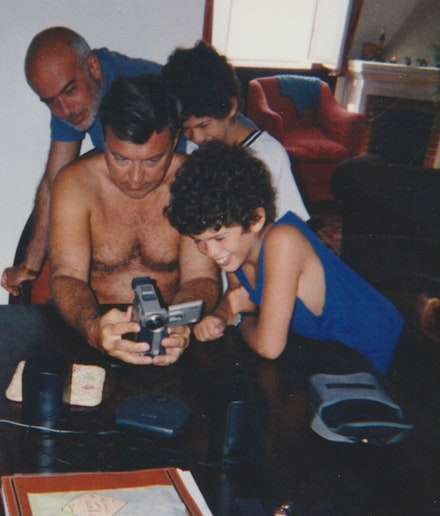
If he had died he would have had to stop laughing with his friends, and there was always so much laughter with Diego. He would have also had to miss his daily Italian lunch at Silvano’s, an unfriendly and overpriced restaurant which mysteriously kept an open tab only for Diego. He would have missed his delightfully bright Italian boyfriend, Massimo, who became a brilliant gallerist and who is grieving now, many years later, having enough sense of poetry to remember that, when young and in love, the bad days were as good as the good days.
Somewhere in Chicago a quietly deranged urbanist utopian mind has generated a landscape of perfect little houses, equally distanced, spaced all the way to the horizon, equally painted in gray and beige, timeless and simple like the drawing of a child, minus the bright colors. Diego Cortez grew up in one of those Chicago reasonable houses, nests of the modernist dogma, stretching evenly in every direction under a wintery sky. Where then, did Diego discover beauty? It must have been watching the light change over the face of a boy or of a girl crossing the room.
After the war, famous American artists, whose exhibitions abroad were funded by the CIA, were famously indifferent to the local context. When Warhol, in an interview, was asked who his favorite Italian artist was, he replied: “Valentino.” Young artist Diego Cortez visited Italy too. He met Boetti who introduced him to others saying: “You must meet this young American who is very unusual, he is actually interested to find out what goes on here.”
Diego showed Boetti his work: loose sheets of technical manuals depicting tools and hardware, stained with Diego’s blood. The works betrayed a mind eager to compile and to collect, they were relaxed, in the family of Cornell or Ray Johnson but without the drama or the ambition.
America is a serious place. Artists take themselves seriously and that is why they feel at ease in America, they stand out less, they appear less grotesque in their exaggerated self-cherishing. To continue as an artist, Diego Cortez would have had to take himself more seriously than he was capable of. He had not chosen the name Diego Cortez because he wanted to conquer, acquire, accumulate. Rather he wanted to be a Conquistador because he wanted to leave a trail of scorched ground behind him.
Usually prophets are taken seriously after they are dead. But Diego Cortez, American prophet and rebel, did not die, he was protected by his sense of humour, by his curiosity and by his faith in Art with a capital A.
He embraced the artists of his own generation, for them he became an impresario, a curator, a critic, a friend. Once an artist who had just arrived in New York for the first time wanted to gather for his exhibition a group of emblematic portraits. They were going to be emblems, like tarot cards, but at the same time depict a particular person, painted from life.
The artist did not know anyone in New York except Diego, whom he had met briefly six years earlier in Boetti’s studio in Rome. Diego offered to organize the casting of the show: within two weeks fresco portraits of Taylor Mead, Jimmy DeSana, David Salle, Terence Sellers, Julian Schnabel, Keith Haring, Fab 5 Freddy, Edit DeAk, and many others filled the gallery. When David Byrne told Diego he would not sit for an almost unknown artist from Italy, Diego replied: “You just want to be another rock star.”
When Diego dismissed a talented and promising friend saying: “You just want to be another rock star,” what he was really saying was: “Watch out, because to succeed means to fail.” And here a shadow comes into the picture: over time, Diego Cortez cheated most of his friends, on one occasion or another, even after many years of friendship, even if he knew he would be found out, even if the material gains were risible. This cheating was not a cheating but rather an instinctive way to say: “I betray you because you betrayed yourself.” I betray you because all of you, my artist friends, to be able to make art, betray Art. You accept imperfection, you accept to be part of a system of normalization which is in the opposite camp, has the opposite goals of everything you believed in when you began. I, Diego Cortez, could have been as good an artist as any of you, but I chose the perfection of life over your petty strategies of make-believe. I broke the rules but I kept my integrity and, as I part, I can still say, in the words of another rebel: “Beauty is mine, perhaps one day you shall find it.”
Fred Brathwaite
FAB 5 FREDDY: DIEGO CORTEZ, R.I.P.
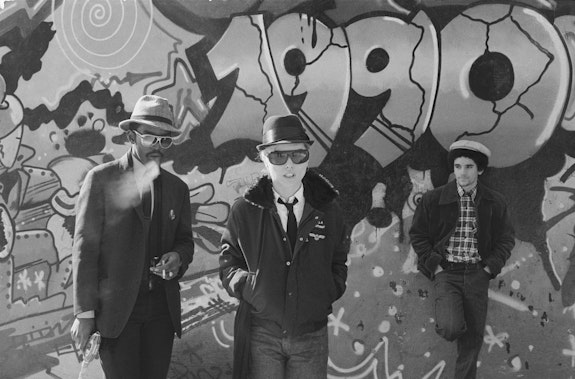
I first met Diego late ’79, early ’80 and I have to say, Diego was a brilliant visionary. I met him on the set of Glenn O’Brien’s TV Party, an underground public access cable TV show. I was a part of that crew, one of the cameramen, and I was also a frequent guest on the show where I met and became friends with many of the key downtown scene leaders. Diego was hanging out with his good friend Anya Phillips, and Diego’s name and what he was doing had already hit my radar really hard. I had that special issue of File magazine—“File Goes to a Party with Diego Cortez,” (1977). I think Diego was one of the editors of that issue and there were lots of cool photos of him and so many other major players on the scene. Debbie Harry was on the cover of that issue. One of the first things we discussed was his name, and I asked if he was Spanish or Latin as I’d recently read about Diego Rivera and the Mexican muralists. He told me he loved them as well and took that name because of them but his real name was James Curtis.
Diego was aware and curious about things I was doing culturally like collaborating with Lee Quiñones on our first exhibition, a two person show at a prestigious gallery in Rome, and introducing these new New Wave friends I was making to this new music scene soon to be called “Hip Hop” happening in Harlem and the Bronx. Diego was fascinated about all of this and wanted to know more as we quickly became friends. Later, I had my first solo show at the original Fun Gallery. I was the second exhibit that happened at the Fun, following Kenny Scharf’s first show. The idea was that all the artists would get to name the gallery when it was their exhibition. Kenny’s was the first exhibit and he called it “Fun”because that was the theme and idea of his work. Being that my show was following Kenny&rsquos, and since we were all trying to be a bit different, I was going to switch it up and call it the “Serious Gallery.” But Patti Astor had no money to change the stationery and the things that she had created for Kenny’s show, so she asked me would it be alright if she kept the name “Fun” for my show, and obviously it remained the name of the gallery, so that was the deal.
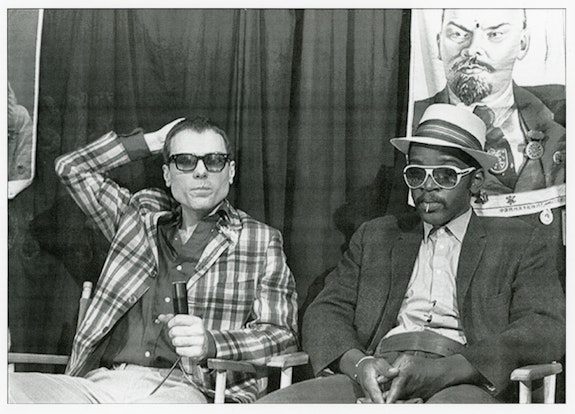
The Fun Gallery was my first solo show in New York, and Diego came to the opening, and was very enthusiastic. My dad also came to the opening, and he was fascinated to see these moves I was making: to go from writing my name on the walls and the trains to painting on canvas and having a show in an art gallery. It was a really fun affair.
A little later that year, I got word that there’s this huge exhibit coming up called The Times Square Show. In fact, it pretty much debuted as a cover story in the Village Voice. The headline read, “The First Radical Art Show of the ’80s.” It was pretty exciting, the way the show was written up. Right away, I thought, “Wow, I gotta see this.” Even though I was a young fella, I had done a deep dive into art history, so I knew all about the Armory Show in 1913 and Marcel Duchamp and how pivotal that show was in introducing modernism to the art world in America. The way this new show was being written up, it seemed very pivotal in the same way. I thought, “Oh my God, I have to see this show, I’d love to be part of this scene.” I had a conversation with Diego and he said, “I know the people that put it together,” and the first event was happening later in the week, and he invited me to accompany him.

I went up to Times Square with him where the show was being held in a former massage parlor—actually an old whorehouse. As I walked into the exhibition, art was covering every square inch of the space in a very engaging way, and there were loads of people all over the place, many coming up to Diego and saying hello. A well-attended art event and one of my first. Suddenly, on the wall, I see this poster for a film called The Deadly Art of Survival. Now, one of the ideas that I was developing with Lee Quiñones was that we should make a film like one of those underground independent movies, a movie that would show who and what we really are and what we really do. Controlling the narrative. I wanted to showcase all these elements of what we now know of as hip-hop culture—all the stuff that was just beginning to poke its head above ground, so to speak. But the thing is—I’d seen this poster before in Lee’s Lower East Side neighborhood. The image on the film poster was a Black man in a park in front of a chain-link fence with blood dripping down his face. Lee told me he knew this guy as a local Kung Fu hero who had a karate school in the neighborhood near Lee’s projects. So when I saw this poster at the Times Square Show, I said to Diego, “Man I’ve seen this poster before, what’s up with it?” And Diego says, “Oh that’s a film by Charlie Ahearn, he’s the twin brother of John Ahearn, one of the people that organized this exhibition.” When Diego pointed him out, I realized he did look just exactly like the guy whose face was on the cover of the Village Voice. So Diego introduces me to Charlie Ahearn and I basically pitch him the idea for what becomes the movie Wild Style. Charlie was aware of Lee’s work as he had filmed some of that movie in Lee’s neighborhood, and he was enthusiastic and very receptive. A few days later, Charlie and I got together and began pre-production on Wild Style, the film that really puts a whole frame around what we know of as hip-hop culture. That’s one of my first major situations, and that was thanks to Diego Cortez.

But Diego had a rival sensibility with the Colab crew that put on that Times Square Show. As we left the exhibition together, he was already muttering about how he’s going to show them how to really do a proper art exhibit showcasing many of these artists, most of whom Diego knew well. That’s when Diego started planning the New York/New Wave show, which would happen a year later at PS1 in Queens, literally the first major downtown blockbuster art show. Although it wasn’t actually in downtown NYC, it was totally that downtown sensibility. Diego featured my work and several other graffiti painters, and of course Jean-Michel Basquiat was prominently featured in that show, and that really helped launch this whole assault in the New York art world. Diego saw it early, got it, and understood it clearly. He was an early champion of everything we were doing.
Now, there’s one other thing I want to add to this little story, and Diego didn’t let me know this until a couple of months later, and neither did my father. Diego was fascinated about meeting my dad at that Fun Gallery opening. I was still living at home at that time, and not long after was living in my first apartment in the Lower East Side down on Clinton Street. Diego had my parents’ number which he used to reach me, so he called up my dad at home in Brooklyn and invited himself over, to come and hang out. He took the A train way out to Bed-Stuy in Brooklyn and went to the house where I grew up and spent an afternoon hanging out with my father, who regaled him with all these stories about growing up in Brooklyn, the jazz scene, and stories about Max Roach, the great jazz drummer who was my godfather and my dad’s childhood friend. Bed-Stuy was solidly a Black working/middle-class community then, yet it was depicted in the media as violent and very dangerous, which it wasn’t. Gentrification has changed that perception significantly now, but Diego was fearless, unbothered by the hype, and had a blast.
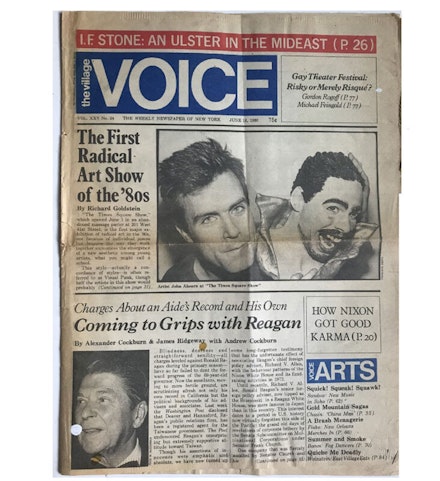
And that’s just a little slice of my dear friendship with Diego Cortez—early champion of what we were doing, of what I was bringing to the table as a visual artist, of hip-hop culture, and the whole idea of this new movement bringing artists of color into the cultural mix. Diego was a champion of all these ideas that I had, that hip hop culture was connected via energy and spirit to what New Wave and punk were all about—breaking the old rules and making new ones. Diego was there early on, full on, a total supporter, who always had a great smile on his face, always had great jokes; we were always laughing, always cracking up. He was always going on about so many topical issues happening in our scene, and in the world, and he hated all the bullshit going on. He hated all the racism, what it was like for artists like myself and Jean-Michel, that we were being treated with so much love and respect in the scene at that time, but then we would walk outside and taxi cabs wouldn't stop for us. There were things that were changing, that were really advanced in our scene, but then the world that we lived in, still live in, still has problems. Diego was not having it, and he was not afraid to just basically speak out.
That’s it, Diego Cortez. Love you, miss you, and we will never forget the incredible impact you had on us all. Thank you.
Ingrid Dinter
Perhaps his reputation preceded him, or his zeitgeist was simply pervasive, or like the wind in the subway which blows through the station in advance of the coming train … he was around.
I had come to NYC in May 1978 as part of a group from my art school in Germany, Staedelschule, in Frankfurt am Main. The school had an exchange program with Cooper Union and at that time Gerhard Naschberger was on deck. We had quite a program for our visit, which included amongst other things a pilgrimage to 420 West Broadway, and of course a stopover at Fanelli’s. It was at Fanelli’s that Gerhard introduced us to Donald Baechler and Jiri Georg Dokoupil, two fellow students at Cooper Union at that time. I also remember visiting Printed Matter on Lispenard Street—it was a tiny slip of a space with a very DIY ambience, including the artists books. We also went to a performance at 112 Greene Street, which was something to do with a naked defeathered ready for the pot chicken, which ended with the punchline “an abscess makes a fart go honda.” We also visited Max’s Kansas City and CBGB’s, and went uptown to stand in front of Studio 54. And so much more.
All that as preamble to—after several visits in the next couple of years—arriving in the City to stay in January 1981, on the day that Ronald Reagan was inaugurated. Shortly after that I recall being at PS1 in deep snow for the opening of “New York New Wave.” That was the arrow in the bow that shot off to become the 80s. Diego had genius, or good mojo, or the vision and/or strings in his hands, or even just interest and will, or all of the above, or more, to make things happen.
The next exhibition of his that made an impression on me was at Marlborough Gallery, The Pressure to Paint, combining the works of current European artists with artists currently working in New York City. In fact, in my view, the end of the ’70s and early ’80s was a major sea change in artmaking, internationally. Probably just the result of a new generation coming up. Before coming to New York City in 1981 I had seen the work of Chia, Cucchi, and Clemente at Paul Maenz Gallery in Cologne. I had been to the Venice Biennale in June 1980 and seen the work of Kiefer and Baselitz at the Germania Pavilion—Klaus Gallwitz (who recently passed) was the Commissioner of the German Pavilion at the Venice Biennale through the mid and late ’70s; he was also the director of the Staedelmuseum, adjoining the art school—a group of us lowly students were invited each time to go to Venice to watch the installation at the Germania Pavilion and attend the previews. I remember seeing Lucio Amelio and Joseph Beuys at the 1980 previews, and running into them later around town. Six months later I moved to New York City, at which time the European American exchange was in full swing.
Diego was in this axis. Being in right places at right times, and having a good intuition/perception. And also the interest and the will to make things happen.
Skipping along, now it’s September 1984 and Pat Hearn has asked me to work for her in her original gallery, on the corner of 6th Street & Avenue B in the East Village. She had opened it a year before. I was her first employee, and the operation was still quite small. I pretty much took the administrative burdens off her, so she could free up to do what she did best: sell art. The season opener exhibition in September 1984 was Philip Taaffe, his first solo exhibition and introduction to the art world. The show attracted attention, a lot of people came to the gallery, and for the next year and some months that I worked there (and in the new gallery on 9th Street) I watched a parade of art world heavy hitters stop by.
When I started to work for Pat the presence of Diego Cortez was very obvious, and right next to him Massimo Audiello. Massimo connected to Pat in very close ways, some of it a kind of mentorship on her part, as he seemed to be prepping his launch as a gallerist coming up.
The story that I heard, or remember, true or not, myth or not, is that Pat and Diego crossed paths the summer of 1984 on the beach in Newport RI. Pat was from Providence, so being in Newport in the summer would be natural. There they hit it off, and to some degree joined forces going forward. I’m sure Diego’s input helped guide Pat on her path as a gallerist. I can imagine him saying “you should …”. And Pat astute as she was, would know instinctively what to heed. But I always perceived Diego’s presence to be in the background, behind the scenes, under the radar—forceful as it might have been. And anyway, I’m sure Diego always had lots of other irons in the fire ...
A couple of the shows I credit him with influencing at Pat’s gallery during the time I was there, or soon after I left (in early February 1986), would be “Otto Piene, Enrico Castellani, Günther Uecker,” and a Sam Doyle exhibition. Those stick out, though there were surely others as well.
When I went to work for Pat I was still a post art school would be artist trying to forge my path in the art world. That was tucked away in the back pocket as I presented as the gallery assistant—answering the phone, for one. This was my first experience answering a gallery phone. It is an empowering experience. You get to know everyone very quickly. Also, suddenly you are quite popular and have tons of new friends. This was the transition from outsider to insider in the art world—privy to much. And once you are in, you remain in.
Diego acknowledged me, and at least from then on forever he never failed when he saw me to say “hello Ingrid”—even if it meant stepping aside from whomever he was talking to and to say that with a little kiss to the cheek. Two other artists come to mind who did the same—Ross Bleckner, and Jeff Koons. This display of very good manners never failed to impress.
Whatever else Diego went on to after passing through Pat’s orbit, he always followed his own path. I wasn’t close to him, didn’t see him often—I wasn’t necessarily out that much—but now and then, in passing, in a restaurant or some such. I remember his stance, with arms crossed across his chest, and slightly something with the feet—flat feet, or so. He was such a handsome guy, but as time went by he didn’t seem to care all that much about his physical self—he got chunky, hair a mess, beard stubble, but carried on.
Some years later, some years ago, for some reason I googled him, and OMG this bio popped up, which was about 30 pages long at that time. It listed in the most detailed and perfunctory manner every little thing he did in his life, neatly organized by year, and surely in chronological order. I thought he must get up every morning to update it. It was like a diary. Like reading someone’s autobiography, or memoirs. It was riveting, fascinating. Not only did it list the things that he did, but also the offers that he had turned down.
Then there was something about a bookstore, in Harlem? Then he was on FB, but wouldn’t accept my friend request, and other stuff. The last time I saw him, and he was exactly the same as always, was at Bard College in 2018 for the opening of the Pat Hearn & Colin DeLand exhibition at the Hessel Museum.
I always thought of him as a mover and shaker, and a behind the scenes string puller. Leaving a mark on the culture of his time, but without putting himself in front and demanding attention for what he did. Rather, facilitating for others. If he lived well now and then, and had some memorable meals, and conversations, good for him. He had ideas, and he had the wind—or knew how to get it—to blow the boats forward. He will be/is missed—a one and only.
Jane Rosenblum
I met Diego Cortez when we were both MFA students at the Art Institute of Chicago.
He was James Curtis then. I was introduced to him by our mutual friend Jimmy de Sana. Diego was charismatic, handsome, and in love with Joseph Beuys, who I had only a cursory understanding of. After graduating, we all moved en masse to New York. Diego and I briefly lived together at 547 Broadway. Once, we found ourselves without any money to get through the coming week. Diego was completely unflustered, but I was a wreck. Although I saw much less of him after I married and had children, Diego and I spent a weekend together the summer before COVID. He was exactly as I remembered, alternately frustrating and adorable. I will miss him.
Jordan Galland
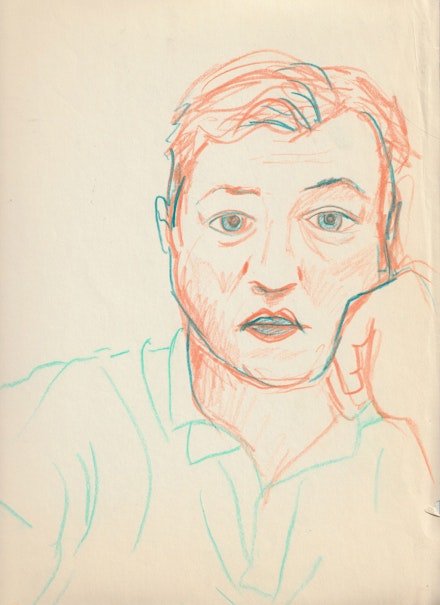
This is a sketch I made of Diego in 1997 when I was lucky enough to be invited to stay for a week at a villa he rented on a cliff in Capri, Italy, which you could only access on foot. He had various house guests but also spent many weeks alone there. He was the first person who explained to me that being alone was not the same as being lonely, that solitude was beneficial and natural, and that while a modicum of sadness should be expected in those conditions, sadness wasn’t a bad thing either. When people asked him what he did in Capri all summer by himself, he would answer with an expression that said it should be obvious: “I read.” He recommended so many good books, essays, and novels, some of which I can still locate on my bookshelf all these years later. Old Masters by Thomas Bernhard, Hamlet’s Mill by Giorgio de Santillana, and Camera Lucida by Roland Barthes are favorites. Others are Art and Fear by Paul Virilio, and Twilight in Italy by D. H. Lawrence, although that may have been because it mentions the villa Diego was living in.
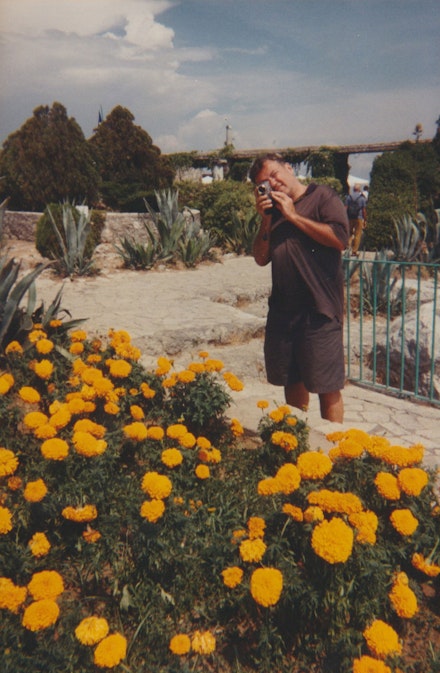
Spending a week with Diego was like an entire semester of the most thrilling college class with the hippest professor, as he’d outline his strong opinions about everything from Gore Vidal to Vidal Sassoon, from MTV to D.H. Lawrence, from David Lynch to Elvis. He was also the first person I knew who videotaped everything, not for sentimental purposes, nor as an artist, but as a way of experiencing the moment from a new perspective. He left me alone, daily, on his terrace where I would stay for hours, trying to write songs, chain-smoking and drinking strong black coffee he made in the morning. I once absent-mindedly burned a cigarette hole through an irreplaceable deck chair that was part of a set of six. I felt so horrible breaking the news to him when he returned at the end of the day. He frowned, understandably upset, scolding me for what seemed like an eternity. Just as I figured it was time to pack my bags, he grinned mischievously and said maybe the owner wouldn’t notice if one chair is missing, jokingly pretending to chuck it over the side of the terrace, where it would have plummeted sixty feet into the ocean-sprayed rocks. I blocked out what happened next in my memory, but I imagine we just walked it into town to get it repaired and never spoke of it again. Or maybe we did throw it over the side.
That same trip Lisa Rosen and Glenn O’Brien came to Capri, stayed with him for one night, and we all went out dancing, the only customers at some small Moroccan-themed nightclub. I’d never seen Diego let loose like that, like it was a high school reunion, recalling the origins of their friendships, the Mudd Club, Blondie, the ’70s and ’80s in Downtown NYC. That night I was witness to these three friends reminiscing about the good old days 20 years earlier, at a legendary time for art, music and culture. Now, that trip to Capri is my good old days.
Kate Simon

I thought he could see into the future, and had a commitment, belief, and intelligence that were inspiring for an artist, that made you work as hard as he did to please him. He was a great impresario and charismatic figure, and the New York/New Wave show he curated, as well as his early belief and support of SAMO (JMB), reflect his brilliance.
Julian Schnabel
I knew Diego for such a long time it’s difficult to say when I first met him. Probably when I was a cook at the The Locale, when I was trading art with artists so they could eat there and hang out. Diego made this thing called “My Latin Heritage,” it was a typed page and he called it a drawing. I didn’t accept it because it seemed like he made it just so he could get a tab, which was very much like him. But we became really good friends anyway, and eventually I came around and acquired the drawing. Somehow he changed my mind.
Obviously there was the time of the Mudd Club. So much of what Diego was, was formed at that time. The thing that really comes to mind when I think of Diego is what a good dancer he was. He could dance in a very funny and unique way. Peculiar movements, almost making fun of himself. I remember watching him dance at the Mudd Club and thinking, God he’s spreading so much joy and so much fun. That he could just get into it and lose himself, I just loved that about him. He understood the atmosphere that he was in, and he could react to that in a spontaneous way. And I think he had a lot of fun doing that.
Diego was a performer, he always knew when he was being looked at. For example, if he was on a panel, he could say something on the panel that would be so off-the-wall, so outrageous, that he would transform the panel into a performance. I recall one time when he was on a panel with other people, and he started to make a list of things he hated and things he loved. Everything just stopped when he did that. That’s a magic act that he could do, in a way that nobody else could. He was very, very funny.
In the early days you always wondered, was there really a contribution he was making, or was he just hanging around? Was he capable of real insight into art or not? And I can tell you that when he curated a show of mine at the Museo de Arte Contemporáneo in Seville in 1988, and wrote the catalog, he was 100 percent there in the best way possible, helping me to realize my vision, ensuring that I got exactly what I wanted. He was 100 percent committed and completely engaged in the art. They offered me a number of different spaces, some very grand spaces, and Diego and I just drove around until we came upon this ruined monastery building which had been converted into an army barracks in the 20th century, and had been abandoned since the 1950s. Part of the roof had caved in, and I threw the rafters out of the window, and then we used them to build a sculpture, called Idiota, which was a huge cross we built together in the middle of the courtyard in that monastery. I have photos of me and Diego lifting this enormous cross up, with all of these workers surrounding it, guiding it with ropes. We pushed it into place and then I painted it there. Diego was working all day with his sleeves rolled up, ready to realize exactly what I wanted to do. Not many curators are like that. I didn't think that much about what he wrote for the Seville catalog, but when I reread it not that long ago, it was really remarkable.

I made a painting of him around this time, a plate painting, he’s very beautiful in it too: he’s slim and he’s got his bright blue eyes. I think he really wanted to be a curator and run a museum, he wanted to be seen as an art connoisseur, and I think that he had very good taste. He guided a lot of important collections. He struggled for people to take him seriously, but when you did, you realized how brilliant he was.
Later in life I didn’t see very much of him, he seemed to be in some kind of self-imposed exile, somehow always on the periphery of things. But Diego had a whole life that I knew nothing about—connections with all sorts of people and places. I remember at one point he asked me to give something to a benefit for Tibet House, and I gave him a painted door that he liked, and then somehow he ended up with it. He was kind of a scoundrel like that. But he was super sweet to me, always. And I didn’t mind him getting something. I was glad he ended up with that work. I never really got mad at him for anything because he was very endearing.
I talked to him a few weeks before he died, he called me to ask for Vito’s phone number. I had no idea I’d never see him again. But I can tell you when he called, I was super happy to hear his voice. I didn't think, “Oh shit, I gotta talk to this guy.” I’m sorry that I didn't get to see more of him, he was a lovely person.
Laurie Anderson
Diego and I grew up next door in twin towns in the western suburbs of Chicago. My town, Glen Ellyn—with a high school in the shape of a castle and a horse fountain at the crossroads—was only slightly less conservative than his, which was best known as the flagship of the evangelical Wheaton Bible College, a school that forbade most music and all dancing. I didn’t know James then but I can easily imagine his irony and flirty charm. We both wanted out as soon as possible.
In New York we swirled around each other for years in intersecting scenes and we often met at parties, openings, shows, and recording sessions. He came to lots of my performances and I always trusted his extremely sardonic reviews. He was often in our building for various photo/jam sessions with Marcia Resnick. He was beautiful and vain and hilarious and absurd, always on the verge of laughing.
I wrote a song for him called “Time to Go (for Diego)” because he told me that his job as a guard at the Museum of Modern Art was to go around the museum at the end of the day and ask people to leave—or, as he put it, “snap them out of their art trances.” I loved Diego and told him many secrets. He was such an accomplished listener. So empathetic and smart.
Like many of his friends I loaned him money and he never paid me back. This made me mad, or rather, it hurt my feelings. I truly regret never telling him it was okay, that it was only money and didn’t matter compared to our long friendship. But I never said that.
Linda Yablonsky
Diego was saying, “Darling, I don’t like to be fucked.” He was talking about sex, though he could also have meant fucked in the larger sense, but this was about sex. There had been a mix-up in the sleeping arrangements on one of our several Christmas holidays with Anne Kennedy and Peter Nadin at their Hudson Valley farm. They always had a houseful. To settle the dispute, Diego, ever the gallant, made me a proposal. Why didn’t I cohabitate with him in his upstairs room? It had two single beds, but he was setting the ground rules, as he often did. We ended up with our own rooms, but from that time on he referred to me as his accidental wife. I have to admit that I liked it.
On Christmas morning, we would sit around the tree before a roaring fire and exchange gifts. Every year, Diego gave everyone books. I don’t think he ever helped decorate the tree. Actually, he may have timed his arrival to the hour when he knew it would be done. Mainly, he sipped wine and in his purr of a voice regaled us with amusing stories punctuated by his informed and occasionally stinging opinions. (“They call it Black Studies, but it’s mainly a deconstruction of a sick white pathology.”) I also remember his anecdote about the time he was carrying a tube of twenty Keith Haring drawings and only realized he’d left it on the subway as the doors closed behind him. (Keith forgave him.)
We may have met at the Mudd Club, which everyone seems to think Diego co-founded, but he told me with unusual modesty that all he did was give Steve Mass and Anya Phillips the idea for a place that wouldn’t play disco, which he hated. By that time, he had already established a beachhead in Italy through Alighiero Boetti, who invited him to Rome in 1974, when Diego was a young artist working as a guard at MoMA, and introduced himself on the day Boetti, his favorite artist, visited. In Rome, Boetti introduced him to Francesco Clemente, whom I did meet at the Mudd, in 1979, but the first time I remember talking to Diego was during the opening of New York/New Wave at PS1. I had never been there before, because who went to Queens in those days unless they were driving to the Hamptons or the airport? I had never seen an exhibition that big, and I thought it was astonishing, though he told me years later that the reviews were all horrible, except for the nice things Glenn O’Brien wrote in Interview, which saved Diego from jumping off a cliff. That show meant a lot to him.
Its arrival was delayed a few years earlier by the Modern Art Museum in Bologna, which commissioned it from him originally and then canceled it. Someone—he never said who—told Diego that a spy from Colab (Collaborative Projects), of which he had been a founder (and the curator of its first exhibition, The Batman Show), got a hold of his list of artists and used it for The Times Square Show, which opened six months before his. After that, he made his living mostly as an advisor or agent.
I didn’t get to know him well until the ’90s, when he was having lunch at Da Silvano every day, hanging out with Japanese and Brazilian musicians, and living in Sandro Chia’s building in Chelsea. When he moved to New Orleans a few years after Hurricane Katrina, he curated shows now and again at the New Orleans Museum of Art and lunched at a Cajun version of Da Silvano, where the walls were a very sunny yellow.
I always knew that he wasn’t born with the name Diego Cortez but I thought he lived up to it.
Lisa Phillips
I first encountered Diego as a fixture of the ’80s East Village scene. He was funny, clever, and very smart. His encyclopedic New York/New Wave became an instant classic. His endless energy, curiosity, and buoyancy propelled him towards new artists, new places, and new adventures. Though his origins and name remained a mystery, he stood for the self-made, self-invented impresario with big ambitions and a confidence to try things that others might have found outlandish. He was always generous with a touch of good natured wickedness lest we took ourselves too seriously.
Lisa Rosen
For Diego…
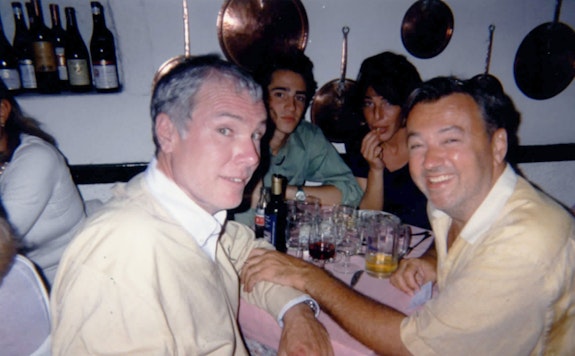
Just a few weeks ago I was telling someone how you got us into Milton Berle’s 90th birthday party. Around the back entrance of a fancy 5th Avenue apartment building, where the men with the guest list clipboards and walkie-talkies were. I had no idea how we were going to get in … without invitations … You said, “Just be quiet and follow my lead.”
Man with clipboard: “Name, please?”
Without missing a beat you replied, “Rosen.”
He flipped through the names, stopped on a page, looked up, and asked, “Bill Rosen?”
“Yes.”
“Right this way, Sir.”
How did you think of that so damn fast??? That at a Milton Berle party OF COURSE there would be at least one guest named “Rosen”…??!!!
You genius, you!
Liza Béar
TESTING THE PARAMETERS OF ART-MAKING:
A flashback by Liza Béar
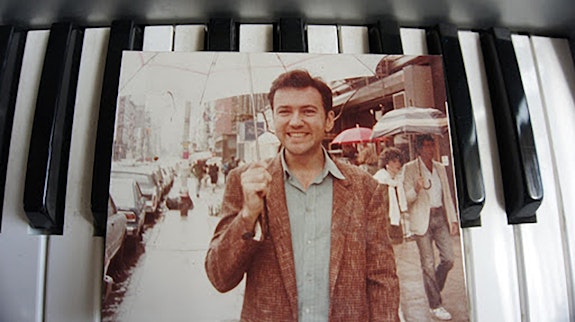
Saturday, April 3, 1976—I’m at Diego’s studio on 308 Mott Street, setting up the microphone on the kitchen stove while Diego packs to go to Europe. The night before, Diego had screened some of his experimental text films like Posture and Poisoning on an analytic projector at Artists Space.
Despite his imminent trip, Diego is not distracted. He stays on point—loose and articulate. The recording has the fluidity of his thought process, laced with wit.
We discuss the origins of the work, influences such as Antonin Artaud, his own attitudes ... he likes the word “peripatetic.” He tells me he has moved as much as three times a year for the last six or seven years, because he doesn’t like to get too anchored.
Among the key concepts that motivate his activities, in and around art, is his model of the artist as a kind of virus, infecting his audience. This was ages before the term “viral” was in common parlance.

Featured in the 13th, Summer 1976 edition, newspaper format—like the later Avalanche interviews, the published dialogue hews close to the raw transcript.
True to form, the interview is provocatively titled with his choice of quote “Diego Cortez: An Obvious Kind of Eyesore.”
I was at first reluctant to post only an excerpt from it, out of loyalty to Diego’s expressed desire to construct his own identity—in the 2000s, he had also wanted his Wiki page purged because he didn’t write it–as well as respect for the Avalanche modus operandi and format. Yet it seems important in this context—a context that is primarily the words of others—that Diego be represented at least in part by his own words. The full interview is at this link; below is an excerpt.
ROLE PLAY (verbatim excerpt : questions are mine)
[Diego]:…The teacher-student thing is one
institutional model that really
bothers me, like the doctor/patient
in medicine. Finding my role ,
playing my role, is the most basic
thing to me: all the films,
installations, anything I do comes
from this role-play—subverting the
idea of artist as …and replacing it
with a doctor/patient model.
---You want the artist’s role to be a
little less grandiose?
---I don’t know anything about
medicine really, so in that way I’m
a kind of quack…
--(uncomfortable laugh) What are
some of the books you have in your
studio? “One Thousand Questions
and Answers”, “How to Remember
Names and Faces”; “Five Things
This Book Will Do For You”…
---That one fits into security, that’s
another role I’m interested in.
---What role?
---The art guard. Because the art
object has a certain value, there has
to be a person who guards it . . .
---Are you interested in
undermining that too?
---Not only . . . I’m interested in
playing that role. I liked what
Shafrazi did with the Guernica, but
I thought it was just as interesting
for me to then get a job as the
guard who guarded that very thing.
---Is that what you did?
---Yeah, within a couple of weeks I
was guarding the Guernica. Because
of the obvious . . . what’s the
word. . .stigma . . .they had to
have one guard stand next to it,
whereas in the other rooms, the
guard could float between two or
three galleries at a time. I had to
stand within three feet of the
Guernica, and not move.
---Did you create this job for
yourself?
---Well, I went after it. I needed
money, and I thought if I had to do
any kind of job, I wanted it to
relate. I wanted it to be
performance, I wanted it to be art.
I was into. . .trying to integrate
those things at the time. And I also

thought I would get a lot of
information from that job to put
into pure art situations.
---Did you?
---None.
FAST FORWARD SEVERAL DECADES
Our Avalanche dialogue is the basis for, the anvil on which unspoken understanding is forged, fellow feeling created... Despite long gaps in—or only incidental—communication over the decades, while our lives took different turns, in 2019 it’s nevertheless a touching surprise to receive the following email, showing Diego’s characteristic humor and generosity.
From my Inbox
On 2/25/19, diego cortez<[email protected]> wrote:
Liza,
What’s this about your staying with me in New
Orleans during Keith’s opening?
That would be lovely.
Diego
When, a couple of weeks later, I arrive at Diego’s renovated shotgun house on Congress Street in Bywater, not far from the Mississippi, he even offers to pay for the cab ride from the airport.
Shocked and saddened at his tragic and painful passing this year, I’m lucky and happy that, for a few vibrant, event-filled days at least, we had the chance to reconnect.
–Liza Béar, New York City, August 2021
PS Diego sent me this photo of his dining room after he had moved his desk there during the summer heat.
Lonnie Holley
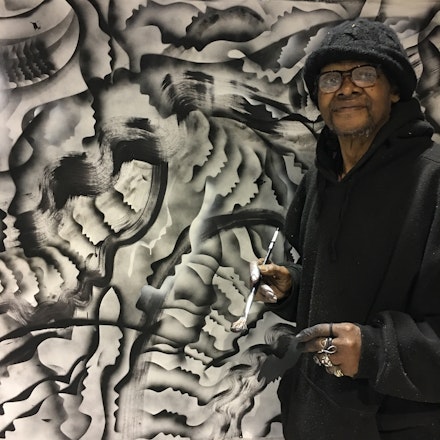
When I met Diego it was clear that he was really tuned into the arts and how art and music shaped our culture. I was honored that he took such a deep interest in my art, but more honored that he took an interest in me as a person. I appreciated that he told many people about my art, but I appreciated even more that Diego’s guest room was always available whenever we showed up at his house.
I enjoyed so many conversations and meals with Diego over the years. I will really miss his company.
In his final days, he was heavy on my mind. I was driving south from New York with my friend Matt Arnett, and as we drove through Chapel Hill I asked Matt if he’d heard anything since his visit with Diego a few weeks earlier. He said he was planning on checking in the next day. We heard later that night that he had passed away, and I realized that I was driving just a few miles away from his hospital at the time of his passing.
He had a great brain.
He has finally become a dust speck out in Mother Universe.
Thumbs Up Diego and Mother Universe.
Luigi Ontani
∆iego ∆Io EGO Cortez ORTE
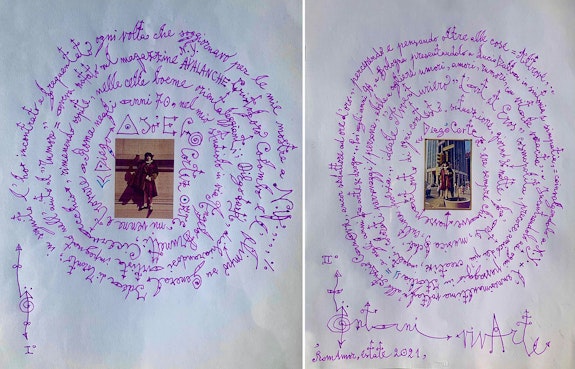
- Diego Cortez came to visit me in Rome in the 70’s, in my small studio in Via Angelo Brunetti, Ciceruacchio, staying as a guest, in the bohemian Oriental-styled cells; DiEgo the Arrow, declaring himself to be artist, engaged in helping the “Tumor” = he noted in the magazine AVALANCHE - Christopher Columbus - Olympus & General Idea of Toronto; then I met him and spent time with him each time I sojourned for my shows in NY.,.,.
- ∆iego Cortez was always passepartout the master key for every context, situation, day & night, between art, music, clubs, culture, poetry.,. Ideal “Adventurer” of Art and Eros, cosmopolitan, precocious, friend of the most creative, restless, colorful characters/persons, skillful in catching moods, loves, sounds, with vital voracity,., Meeting him at every one of his passages in Italy, and in the years between art and drugs.,. Then in the 90’s, in Bologna, introducing him to Lucio Dalla in harmony and sympathy = involving him in NY + for the umpteenthlast time at the Canova Studio, still a seductor at the golden hours.,. perceiving and thinking beyond things = Elsewhere…
Translation/version by Mario Biagini
Marcia Resnick
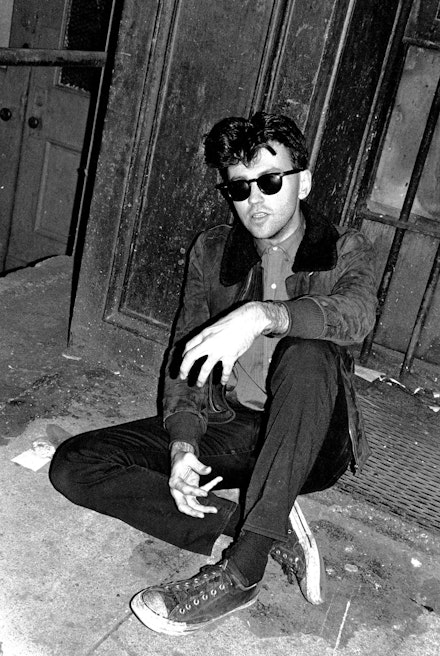
Once upon a time in the mid-1970s, during the heyday of the downtown art scene in New York City, there was a boyishly handsome, charismatic, and spirited artist who named himself Diego Cortez. He was both an inveterate prankster and an estimable innovator. His take on ART influenced his peers to make bold new inroads in their own artmaking.
I remember the time Diego and I met up at a rather stodgy dinner party in a Soho loft. Diego beckoned me to join him under the sheets on a conspicuously positioned bed. As I followed his lead I found myself feigning the movements and sounds of lovemaking along with him. Our impromptu performance was met with a mixture of indignant horror and raucous laughter. I also remember how much Diego loved indulging in mischievous activities along with friends like Tony Shafrazi and Zadik Zadikian while on fun excursions in my car. On one such trip to Atlantic City, Michael Oblowitz and Rosemary Hochschild and I all followed Diego’s lead and began hawking “GENUINE PUNK SAFETY PINS” for only one dollar each, on the boardwalk.
In January 1977, I gave a “Split Beaver” themed party in my Canal Street loft. A split beaver is an explicit pornographic pose fully revealing a woman’s “nether hair.” I invited my guests to enter a staging area and be photographed while posing with their legs open, clothed or unclothed, alone or with others, using available sex props or not, etc. As evidenced by the photos, there were “No Holds Barred” for Diego Cortez and Kathy Acker!
Diego was a loyal and generous friend who would always be there to pose in photos for my “Resnick’s Believe-it-or-Not” column in the Soho Weekly News. And like me, he enjoyed acting in the movies by Scott B and Beth B. Then there was the Mudd Club, the brainchild of Diego, Steve Mass, and Anya Phillips, which became a place where we could all luxuriate in the art, music, and company of our peers. In 1981, Diego curated the groundbreaking exhibition New York/ New Wave at PS1 which featured a multitude of works from his friends. It was the first time I showed the photographs from my series “Punks Poets & Provocateurs: NYC Bad Boys.”



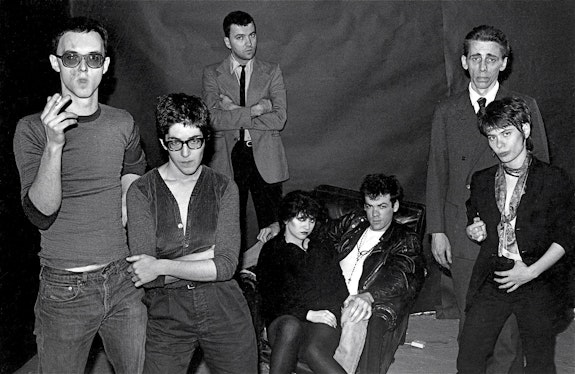
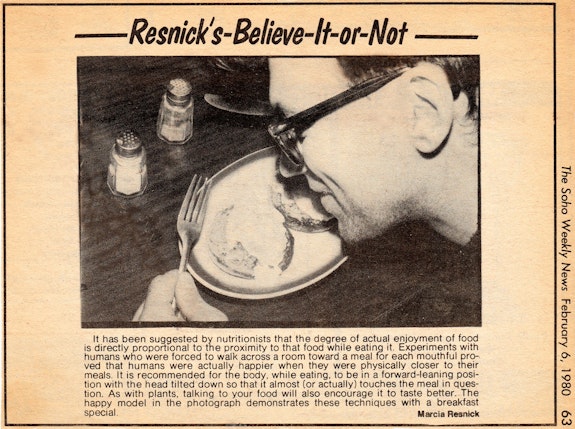
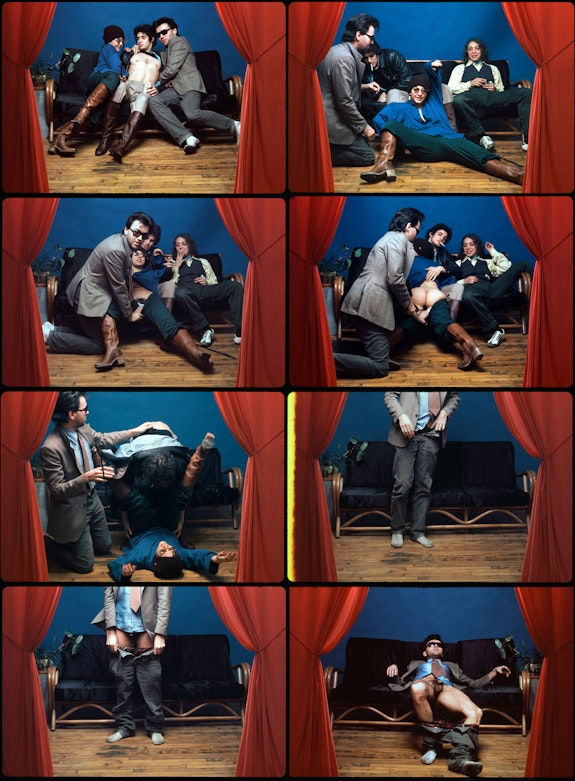
Mario Diacono
Unfortunately I have fading memories of my friendship with Diego Cortez. I had met him in New York in the 1970s through Lucio Pozzi, and for a while, I was seeing him often in the city. I was attracted at first by his Cortez name, which he soon told me was a politically motivated made-up name, but really I was drawn to the fact that Diego was the sweetest art person I had met in New York until then, the least aggressive and the most open person, totally involved with what was happening in the art world. I later admired him for his passion for networking—he seemed to know almost everybody in the world. In 1981, if I have the year right, he came to Rome, possibly after the Basquiat show in Modena, and my wife and I hosted him in our apartment for about a week. I don’t remember much of those days except that he was also like me—very interested in the Neo-Expressionist artists, we discussed them at length. In Rome, he became friends with Enzo Cucchi and later wrote for some of his shows. After I moved again to the States in 1984, I saw him a lot in New York, but when I moved to Boston our meetings became much sparser. I was seeing him once in a while after he became the adviser of a now well-known collector here in Boston, Gerry Fineberg, who was at the time a common friend. Then he kind of disappeared, but never from my thoughts. I almost couldn’t believe it when I learned of his death, since he had always remained in my mind as the sweet, young person I met in New York and Rome.
Mary Boone
I knew Diego right when I opened my gallery in 1977. It would be hard to describe him to someone who didn’t know him, because there were lots of different layers of Diego, and lots of different periods of his life. Actually, his personality pretty much stayed the same throughout, which was kind of edgy and charming and funny. He brought life to the scene in a special way. For a long time, it just seemed like wherever he was, I was, and vice versa. We were always in the same place at the same time. I always liked him—in the beginning, the middle, and even in the last days that I saw him. But he went from being a very beautiful boy to a grizzly old man with the beard, the stomach … I prefer to remember him as I prefer to remember myself: younger.
Diego loved energy and he loved newness. Any time there was something that had newness or energy, that’s where he wanted to be. The great thing about information is how it’s passed around freely. Look at what happened at the PS1 show: so many people saw those artists for the first time. Somehow those independent shows have a purity to them that showing in a commercial space never holds. He was always very supportive of the artists. He was the best friend an artist could have.
I did a lot of business with him in the early days. He always had one or two collectors that he was advising. I found him to be pretty transparent, compared to what people are like now. For many years, I shared a gallery with Michael Werner, who just loved Diego; maybe that’s why I loved him—we tend to agree on things, we had a lot of the same friends. Diego was always going over to Europe in those days, looking at things no one else was looking at, and he brought back a lot of information which he shared with everyone, including the artists. Jean-Michel just loved A. R. Penck, and I’m sure that was Diego’s doing.
For years, Michael Werner felt like Europe was being ignored, and that’s why he and Leo didn’t get along. He never understood why Leo didn’t show European artists, because he was a European. I remember the show Diego curated at Marlborough Gallery in 1982 called The Pressure to Paint. That show introduced a lot of people to the European scene, in the same way that the PS1 show introduced people to what was happening in New York. His friendship with Henry Geldzahler was very important, and I think Henry used him as his eyes and ears for a period of time. As you get older, it’s always good to have another perspective.
Diego never wanted to be seen as an art dealer. He wanted to be seen more on the poetic side and less on the commercial side. He probably was a little like Blanche DuBois: he relied on the kindness of strangers. He got paid any way he could. Artists would often give Diego works, and he would sell them to live, because he was there to support the system. Artists understood that because they played by the same rules. I don’t know why that stopped—it shouldn’t have. Everything was so different back then; artists really held the upper hand. Today, artists almost seem to be afraid to say anything to their dealers. The art world got too professional, and Diego just didn’t have the same place in it anymore.
Diego was about connectedness, bringing people together from disparate backgrounds, and that’s why he was so much fun. He really believed in art and the humanity of it. Things have changed so much now with computers and everybody just emailing one another, which is sad because there’s something great about looking at someone’s face and hearing their voice. The JPEG didn’t help the art world at all, and it certainly didn’t help looking at art. The whole reason to have a gallery is to see people come in and have a conversation, and see their expression when they look at art. And that’s why I didn’t really mind closing my galleries, because I think we’re entering into a very different time, one that doesn’t really speak to the brick and mortar situation. I hope I’m wrong. But certainly gallery attendance has dropped way off, even before COVID-19. I think it probably became harder for someone like Diego to function as an independent person in the art world.
You wanted to be around Diego because he made you happy. He reinforced the positive aspects of life. I really miss him. It’s odd with the pandemic—you’ve fallen out of touch with people in the year and a half that has passed by now, and somehow you expect everyone to be the same as when you saw them last, but it’s not that way. Diego just never seemed like the kind of person who was going to check out.
Massimo Audiello
Destiny Spinning Wheel
It is hard to talk of Diego with professional detachment since my relationship with him was of a completely different nature, but “art” was also very much part of our story, so I will give it a try.
My meeting with Diego felt always to be so very much God-sent because the timing was just too perfect. I had graduated in Architecture the day before and just 24 hours later I met this guy who became unexpectedly the ambassador of my future.
We met at art critic Pier Luigi Tazzi’s country house outside Florence, Diego had just arrived from Bologna where he had participated in a festival showing some of New York City New Cinema.
He looked like a punk Elvis with vivacious, diabolical green/blue eyes and a friendly sparkling energy, happy to be there, make friends, and communicate. I was instantly seduced by his presence. He looked so very New York from head to toe.
Head, because you could tell he was cutting his own hair in a punk mohawk, chopping big chunks of his scalp, toe because he was wearing those Ramones-style tennis shoes that by just looking at them you could tell had been around the city, up and down, as only NYC soles can do.
He began showing me the material he was carrying around, which was a presentation of what would become his New York/New Wave exhibition; just images of the bands, the protagonists, the artwork.
I was instantly smitten by the whole package and ended up in bed with him the same very night, but we weren’t alone. It was a three-way with a girlfriend of mine. I didn’t want to take over the full responsibility from the very start.
But the day after we were on our own, and the rest is history. Besides being his boyfriend, I became a major fan of everything he did, whatever that may have been: books, exhibitions, promotional work. I just adored everything he did.
I always found his ideas so special and unique and completely original.
The Private Elvis (1978) book done with photographs found in a garbage in Hamburg with text by Duncan Smith.
The Semiotext(e) he curated, conjugating political philosophical ideas with private poetic personal sensibility.
The Basquiat portrait taken by James Van Der Zee for Interview Magazine, taking this old master from Harlem and uniting him with this enfant prodige that was Jean-Michel!
Another little gem I witnessed with my own eyes was an Andy Warhol’s exhibition for children, in the Redwood Library and Athenæum of Newport Rhode Island. It was installed in a beautifully proportioned, nice, square room. The wall had been covered entirely with one of Andy’s wallpapers, this time no cows but instead fish, big silver fish. How appropriate for a town famous for its port and seaside beaches. On top of the wallpaper at child height were installed all the Warhol paintings representing toys, robots, and superheroes and all kinds of children’s favorite topics. The idea to hang the paintings at child height appeared to me so smart and sensible. Diego had a strong belief in the didactic power of art to change the world for the better, and what more fitting an exhibition to show this belief, involving people from a very young age.
I mean I was in awe. Everything Diego was coming up with always had this original spin on it.
Last but not least, we were both from the working class. No one served us culture on any silver platter. We both got interested in art because of our own personal need to express ourselves, our beliefs, and our view of the world.
We both had a rebellious seed of anarchy set inside of us which had made us permanent Insiders/Outsiders, breaking the rules and at times being terribly obnoxious and willingly self-destructive.
We adored our independence and freedom and most of all our fun. That is where we connected the most, this need to be ourselves outside any formal establishment, structure, and social restriction.
Our life in the loft on 36th Street during the making of New York/New Wave was really hard. Our living room view was a brick wall just a few feet away, the kitchen was a dark dungeon, the setting was so NO WAVE, as much as you can imagine it.
But it was there that Jean-Michel’s career was forged and so the careers of many others.
It was there that Fab 5 Freddy, through Diego’s insider experience, began to push hip-hop and graffiti in the mainstream. And now I will just stop because tears are pouring out …
Michael Almereyda
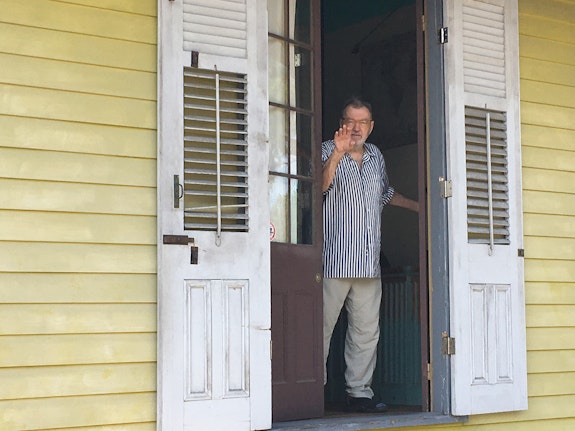
I met Diego in November 2011, backstage at a New York Public Library event. He was at a point in his life, he told me, when he was saying yes to all the things he’d said no to in the past. This was his justification for agreeing to act in a short film I asked him to appear in. The film was adapted from one of Calvino’s “Italian Folktales” and I thought, within five minutes of talking to him, that Diego would be right for the role, a poor man with three beautiful daughters. While not quite committing to it he said: “I’ve always thought of myself as a closet heterosexual.”
The film was self-financed, micro-budgeted, with a small cast and crew, mostly in their 20s, and Diego’s scenes were shot in my abruptly crowded East Village apartment. I could see he was suffering during various uncertainties and delays in the shooting, could sense him weighing whether or not he should be irritated and impatient, should quit in a huff, but at a certain point he decided he was enjoying himself, and he delivered what I considered a perfect performance. When we broke for lunch, he guided us to Momofuko on 2nd Avenue and startled me by paying for everyone’s meal.
He appeared in two other films I directed, commercial movies, holding his own with recognizable actors. I eventually learned he’d been an eager participant in high school plays, and in college he took filmmaking classes taught by Stan Brakhage.
Within a year or so, almost without my noticing it, Diego became one of my best friends. He invited me to dinner parties at his gleaming new place in Williamsburg and, when we were both in town, we’d meet for lunch or dinner at least once a week. He was, as anyone will tell you, sly, funny, irreverent, self-mocking. A laconic Falstaff. A sardonic Winnie the Pooh with one tender paw always dangling into a honeypot. He was also beguilingly serious about art, at once avid and offhand in his continuous reading, thinking, and talking about art. There was room for other subjects, but just barely. Once, at lunch, he reacted with faux outrage when I attempted to talk about the weather, and this outrage—we realized it simultaneously, and laughed together—was only partly a put-on.
At a memorial for Lou Reed, Diego found me alone at a buffet table and described a just-concluded performance, in the adjacent room, of the last movement of Messiaen’s “Quartet for the End of Time.” Seeing my disappointment at missing it, he led me into the emptied space, intercepted the musicians as they were packing up, and persuaded them to play the piece again, just for us.
You can measure Diego’s nonchalant supernatural charm from this. It wasn’t the only time I saw him bend or recalibrate time and fill a room with music, with a feeling of aliveness and renewal. I take some solace from knowing I’m not alone in recognizing how remarkable, gleeful and generous he was, even as I also know I’ll be missing and mourning him for the rest of my life.
Michael Oblowitz
… Meeting Diego and the creation of Autonomia: Post-Political Politics
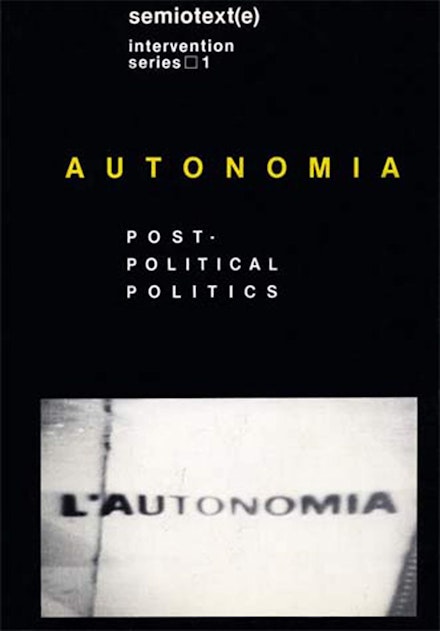
If my memory serves me well, I arrived in New York around 1976/77. The International Center of Photography was showing my South African photographs from 1972–75, and it was there that I met Marcia Resnick. She was already an established photographer and a few years older than me. I became her lab assistant, working in her studio, in a loft, at the bottom of Canal Street, where she took portrait photographs of all the Downtown New York celebrities. Among her most captivating subject was this anarchic personality, Diego Cortez, whose star on the Downtown scene shone as brightly as his sensitive movie-star good looks and sardonic wit. He was as hip and as smart as they come. Our early 1976 onward five-year friendship was scintillating and a beautiful entry point for me, as a young expatriate South African, into the New York avant-garde.
Diego was sharing a loft in Midtown Manhattan with Sylvère Lotringer, the founder of Semiotext(e), and I was living with actress Rosemary Hochschild, way downtown and much closer to the Mudd Club, which Diego Cortez had founded with Steve Mass and Anya Phillips in a building owned by the artist Ross Bleckner, another close friend. In those days venturing above 14th Street was considered ultra uncool by the most avant of the avant-garde, so I did not meet Sylvère until a year later. Diego and I hit it off and for a few years we were great friends … most memorably tripping on acid with a sober Jeffrey Deitch in Atlantic City, which I filmed in Super 8.
Soon after meeting him I received a grant to study film and theory at Columbia University’s graduate school, which is where I met Kathryn Bigelow, while watching Jean Rouch’s Chronicle of a Summer (1961). Kathryn and I were both studying with Peter Wollen, which led us to the graduate Semiotics program run by Sylvère in the French department at Columbia. Meeting Sylvère changed both our lives forever …
Sylvère’s class was sometimes surreptitiously audited by Diego and his razor-thin friend, Seth Tillett. They were always disruptive in class, asking obtuse explosive questions subverting the decorum of the Ivy League academe.
Kathryn and I basically used the graduate film program as a free camera rental house, hijacking the equipment to make our own avant-garde films, now in the permanent collection of MoMA as well as films for Lawrence Weiner, and I even jacked the camera on a weekend to help out my friend Amos Poe film Debbie Harry for his film The Foreigner (1978).
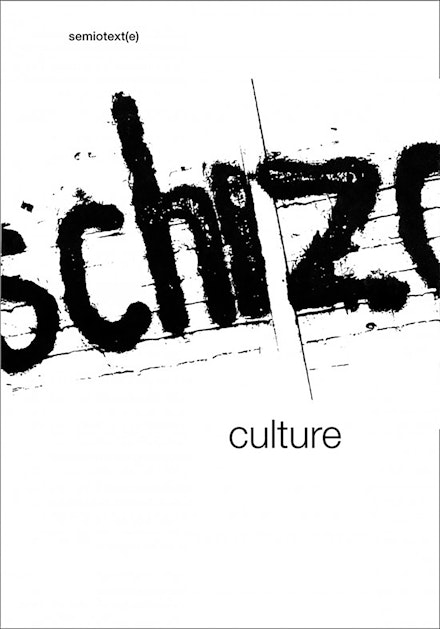
Sylvère had invited Kathryn Bigelow and myself to join the design team of Semiotext(e). Diego was the design leader. Soon the three of us were deeply involved in the creation of the legendary Autonomia: Post-Political Politics (1980), which was issue number one in the Semiotext(e) Intervention Series. The issue revolved around the Italian political movement, Autonomia Operaia, a group without a public face—unlike Le Brigate Rosse and other groups of that time who engaged in overtly spectacular acts of public and political confrontation.
I think appropriation was Diego’s forte—a typical example was when Diego discovered the absence of available visual material on the Italian revolutionary cadre, the Autonomia Operaia. His friend Seth Tillett had recently returned from a trip to Italy with the ethereal Lizzy Mercier Descloux, where they had spent time trying to film and videotape members of Autonomia Operaia. He shot interesting material, a kind of anti-film film, as he wasn’t actually allowed to film anyone from the group. The images for the Semiotext(e) Autonomia issue were photos taken from his video, mostly associative/poetic interpretations, but also vivid images of the Aldo Moro killing, and Toni Negri’s travails, as well as other tangential events. Many of the images which Diego used in the issue came from Seth’s film and archives, without attribution, a typical Diego move. He also used images of mine in the famous PS1 exhibition, without attribution, and this led to me having a falling out with him that lasted decades…
Diego loved chance … I remember late night sessions designing the Autonomia and Schizo-Culture issues. Martim De Avillez, who was trained in art layout in the magazine industry and me, with my high-end photographic background, did most of the paste-up and layout work, everything composed according to Diego’s specifications. It was a vibrant period of work. Both of those issues sold out within a matter of weeks and were passed around, borrowed, and stolen, by many of the artists we knew. I don't think it's an exaggeration to say they formed the political blueprint for much of underground New York in the 1980s.
There was always that feeling of punk rock edginess around Diego, always counter-intuitive and keeping one intellectually off guard; he walked a razor’s edge between beauty and suicidal intentions—keeping everyone around him on alert—never knowing what barbed comment would be fired off of his acerbic tongue. It was a vibrant period of work. As Bob Dylan wrote, “there was music in the cafes at night, and Revolution in the air.”
Michele Zalopany
Memories of Diego Cortez
Diego came into my life in increments. When in 1980, I was led by the hand of Rene Ricard into the Mudd Club, I had no idea that Diego was its co-creator. I had seen the work by my friends from SVA, like Keith and Kenny, in the New York/New Wave show at PS1, but still didn’t know Diego. It was after moving to Rome that fall that I met Massimo Audiello, his boyfriend, who told me more about him. I can’t remember where or when I finally did meet him, but it was seamless. Looking back over decades, my memories of Diego are still incremental, but powerful and salient. Rolling up tight balls of newspaper to keep the fire going in Manuel’s stove in Seville after visiting the grounds of the Ibero-American Exposition of 1929. Being one of two women at a party of men in his 12th St. townhouse … just one of the many parties in his various residences. From one of those residences in Newport, we flew to Block Island to meet up with Pat Hearn, where we swam naked and hung out on the beach of this staid, family vacation destination of German descendents. Sleeping with him at his parent’s house near Baltimore where I met his beloved sister, Kathy, who he had send me her secret recipe version of English toffee. He told me that I was one of five who were so privileged to receive them. From there, he led us on to a tour of Fallingwater House in Mill Run, PA. At the Venice Biennale, where he introduced me to Chaka Khan by telling her, “her mother was Berry Gordy’s secretary!” We were together in the villa he rented in Ronciglione, Italy, on the day JFK Jr. died in a plane crash with his wife and sister-in-law. While sitting speechless with the news, the much younger lover of the proprietress, a disgruntled kid she plucked out of the Bronx, had his bag packed and was circling around the house armed with a knife.
I remember Diego moving … constantly in motion, except when seated in a fancy restaurant with a table of exquisite food before him. The word that comes to mind when I think of Diego is goloso. Goloso is an Italian word that doesn’t translate well in English. It means greedy, in English. The antonym of greedy is generous. Diego was deeply both; he was goloso for life, and all its pleasures, and he was embracingly generous in sharing his joy and golositá with those he loved.
Thank you Diego.
I love you.
Paola Igliori
Diego was a lifelong friend.
A month ago I was in the terrace in Capri where, the morning after taking Joseph Beuys out to dinner for his birthday under the lemon trees at Paolino’s, Diego and I photographed his Capri Battery ( a light bulb charged by a Capri lemon!) of which Joseph had just gifted me the prototype, making sure I would change the lemon every couple of weeks!
I was thinking intensely about Diego and wishing to spend some time together on the terrace this summer like we had planned this April, when he was getting out of hospital.
I had not gotten answers on his WhatsApp, called around, and found out the terrible news. Connected with him through his sister.
Now Diego is gone.
A huge loss. Filippo and I CANNOT believe it.
A life of vivid memories from the ’80s on flashes: the constant lunches he would invite me to at Da Silvano’s in New York, savouring delicious fava beans and pecorino (a relic of an ancient fertility ritual, traditional for us Romans on May 1st: the fava represented the phallus of the Earth; the pecorino represented the milk, the breast of the Earth!); our favourite Puerto Rican spot when I went to visit him in his beautiful house; floating and getting baby oysters in the wild mangroves in Boquerón; hanging out with Jean-Michel Basquiat, then with Paul Miller—DJ Spooky; visiting in Fayetteville and New Orleans; and discovering Zydeco. Then our Mediterranean summers, many summers in Capri with Lucio Amelio and Joseph Beuys, taking Franco’s handmade step ladder from his chicken coop, and Diego and I cracking up when it reappeared with a huge rock as an amazing artwork at his show! With David McDermott and Peter McGough also in Capri; David singing in the boat to Nerano; the visit with Raymond Foye; visiting Philip Taaffe in Naples; all this always with young Filippo and the many gelso icecreams!
I remember giving him my apartment on 23rd Street to stay in when I split up with Sandro, which landed him years later with a half floor in this beautiful building I had found, and how he jokingly said in the last of many summer visits to Ronciglione just pre-COVID: the best paid lunches ever!
SO smart and SO fun we always had such good times, chill and funny.
Missing my great friend. It’s SO SAD.
Paige Powell
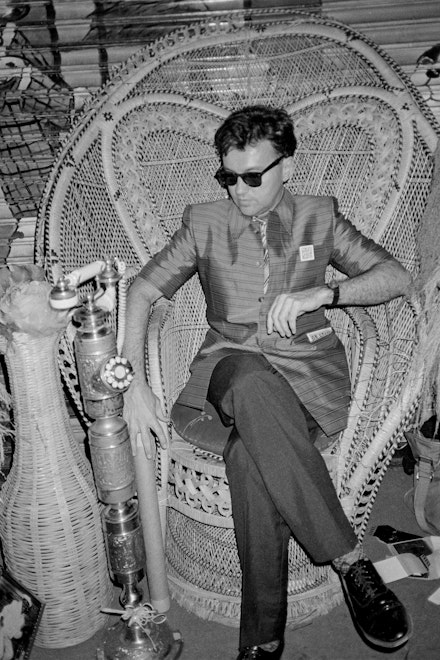
Diego never seemed hurried. A cool, futuristic Beat and handsome sweetheart with a witty and wicked sense of humor! His magical soirées held at his NYC village apartment would transport one to a Bloomsbury gathering, giving the vibe that Leonard and Virginia Woolf, Duncan Grant, Lytton Strachey, Dora Carrington, and Vita Sackville-West were lounging around on fainting couches. Those gatherings alternatively had the aura of hanging out in a 1950s San Francisco bungalow with Jack Kerouac, Allen Ginsberg, Lawrence Ferlinghetti, Robert LaVigne, and others. Just by his presence, Diego created otherworldliness.
His Bohemian rakish good looks, natural suave, and curious mind—seemingly effortless—evoked genius and generosity and, along with his signature lo-fi flow, made him a magnate for artists.
Diego was a genuine legend in his own life.
That rare beautiful bird, poet, author, artist, visionary, art critic, and beyond gave more to other artists than himself.
In these photographs, Diego sits regally on a rattan Peacock chair swaggering a sharkskin suit (125th Street, Harlem, May 1985). We had attended the reopening of the Apollo Theater (starring the Temptations) with Francesco and Alba Clemente and Edit DeAk before heading to the Harlem Moon Bar, La Famille, and The Beverly Hills restaurant, some of Harlem's finest bars and restaurants.

Patrick Fox
I don’t have a photo for this little story, and I’ve never written it down before. I believe the year was 1982. I should do a little research probably or consult with the artist with whom I was with at the time, Robert Hawkins. The only reason I’m writing this at this time is because it is actually the 75th year since the birth of Rene Ricard. Some say he and I were best friends. There are many reasons for which I would never dare lay claim to that much sought after distinction. At the time when this little těte-à-těte occurred, whatever the year, I can say with absolute certainty, that Rene Ricard and I were far from best friends, but were rather recent best acquaintances. I had also recently become acquainted with the very enigmatic, yet more subdued Diego Cortez through Edit DeAk … Edit and I met a little earlier but became friends during the filming of The Threepenny Opera. Directed and costumed by Mary Lemley and cinematography by James Nares. The location was the Anderson Theater. It was filmed in its entirety—alas, filmed with the lens cap covering the lens, and so no footage exists. At the time, I was working on and off in various galleries, going from one to the next, patching and painting the walls between exhibitions.
I was with artist Robert Hawkins and we went with Rene Ricard to the Robert Stefanotti Gallery opening on 57th Street for an opening with Don Bachardy, Jimmy DeSana, and Suzanne Harris. It was one of those super glamorous nights that once it was over you had to check and make sure all of that actually happened. We knew it was going to be fun because everything surrounding Don Bachardy has always been white/blue hot. People were still in the early stages of arriving when what kicked off the night was a “So, you wanna be famous, kid?” moment that had I not seen it with my own eyes and with a witness, I wouldn’t believe it could be true. (I cannot believe I’m not getting paid for this.) OK, here goes nothing …
There was a very small area of the gallery between the gallery exhibition room and the back office and smaller room for art storage. The area where the action took place was not quite big enough for the five of us to stand in. But there we were. I believe it was used for “reception.” There was a small desk-ish thing, pipes overhead (painted dark brown), and I think a bit of an elevated counter where Gallery Guides and Art-Rite magazines would have been placed at waist-height. Mr. Hawkins and I were standing with Rene when the elevator opened and Diego Cortez stepped out with Jean-Michel Basquiat. Jean-Michel had just slightly normalized his hair, some parts had grown out, and it was becoming the more familiar (i.e. famous) dreads. When Rene saw Jean, he grabbed him, pulled him into the corner, and Diego closed in with Rene. Jean-Michel, whose smile was the definition of beatific, was never more so. He was emitting sparks and couldn’t contain his joy at what these two were telling him. He was positioned between their shoulders, facing from the corner out towards Hawkins and me as if to make sure he had a witness.
“Do you realize how famous we are going to make you?” “You are going to be the most sought after artist.” “I’ve already spoken to my editor and I’m going to write a cover story about you for Artforum—but I need an exclusive!” “You’ll be all over the New York Times! You’ll be on the cover of Time Magazine within a year!” It didn’t go on for long, but the night did. At one point, a bit later, we were sitting on the floor in the back office smoking a joint. Henry Geldzahler came and sat down. When Christopher Isherwood saw us there he said, “I’m going to hang out with the kids.” And sat in a chair in the small office. The entire gallery was buzzing with activity in every corner. I remained seated in the office once I found out I didn’t have to move, that people wanted to know what was going on in there. … Once the gallery started the familiar dimming of lights, Henry made sure Jean-Michel and I knew where to go for the dinner party. I don’t recall how we got there. I was most certainly young and broke. Taxis were a luxury at the time. Somehow, we arrived at the collector’s house on Central Park West. Diego was there and walked us to the bar and showed us where the food was being served. While getting drinks he asked me if I caught what he and Rene told Jean. His tone and demeanor were actually quite sweet, and his voice for as long as I knew him had undertones of kindness. He was laughing gently but heartily and said how glad he was that I saw and heard it. It was really the first time I had a significant interaction with Diego. I asked if he knew Rene would be there. It wasn’t planned, but he explained how important Jean-Michel was and that he was about to be recognized now for his importance. He asked if I liked his work and I had to admit that I didn’t know it but I loved SAMO. “Just wait until you see.” He ate and made his way about the party but before long I watched him make his goodnights. I was getting a drink when I heard Rene telling Cookie Mueller about cornering Jean-Michel with Diego. When he noticed me over Cookie’s shoulder he waved me to come closer. He too asked if I enjoyed the show, but I thought he meant Don Bachardy’s exhibition. Immediately correcting me at a nearly screaming pitch, “No silly, the show Diego and I put on for you and Robert with Jean-Michel,” he was still laughing and said that we witnessed the kind of scene Hollywood only dreams of creating. I looked around but did not see Jean at the party. Later, I read a poem Cookie wrote about that party. It was one of those nights … it was impossibly sublime as in what was next, you musn’t look away for who knows what is in the offing: the food, the drinks, the people, the setting, the people, the conversations, the people. It was immediately, legendarily heady. I didn’t want to leave because who knew what could happen next? Honestly, right after I met Quentin Crisp, we chatted for a few moments when someone walked Divine over to meet or speak with Quentin. In seconds, before I was ready, Quentin said, “Have you met Patrick?” “No, it’s nice to meet you,” Divine asked in mock sincerity if Quentin and I had known each other long. Before I could choke out a word, Quentin said we’d just met and started chatting. I left as they were discussing the view, both in a corner overlooking Central Park: “Oh excuse me, there’s my friend.” When I got across the room I said, “OK, I can go now, Quentin Crisp introduced me to Divine.” The entire evening remains seared in my brain, nearly every moment meaningful, and the entire evening was memorable. Divine indeed. Diego must be laughing gently hearing about that night so many years later …
Patti Blau

I met Diego through my friend Jon Rudo around 1980. I had just finished art school and Diego had seen my work at Rudo’s house and liked it.
Jon set up our meeting, and I distinctly remember him telling me at that time “Your life is going to change.”
Diego and I immediately connected and we remained close friends for all of these years. My work was in the New York/New Wave show, and after that I gained access to many art connections. I quickly came to view Diego as my close friend and mentor.
Diego was quick witted with an acerbic sense of humor and a highly distinguished sense of aesthetics. He loved to travel, and we went on countless trips throughout Europe and the Caribbean. He exposed me to a life filled with art, travel, and experiences I never would have had. I soaked up everything he shared with me.
Most importantly though, I learned from Diego why something had artistic value, in relation to both history and aesthetics. His vast knowledge equaled the enormous library of books he kept in his home.
I would often stand and look at the books and titles and wonder how he was able to categorize it all, with such an array of subject matter, and yet, his brain could quickly analyze and prioritize the important facts. He put you immediately in your place for not understanding the knowledge we all have access to, if we only had the capacity to understand it. I think that was one of his many gifts, his genius.
Along with that need to shock and question, and his innate talent for defiance, Diego was very loving and caring. He cared deeply about his many friends, the betterment of the world, and especially about art: how it would be seen, recognized, and preserved. He spent years building art collections for clients. He knew what would endure through time. He knew what had value. He curated, he cataloged, he wrote, he read.
I valued and respected Diego, aka Jimmy Curtis, as my dear friend and I will always miss him.
Peter Nadin
Diego/Jimmy: Warts and All.
On June 21, 2021, Diego Cortez died, and he took Jimmy Curtis from Chicago with him. Diego was never a solo act. Jimmy was always there. In fact, Irish Jimmy had a fine singing voice, a lightness on the dance floor, the gift of gab, and a pickpocket’s finesse. Diego was an aesthete, cultural impresario, bon vivant, and hero of art and music to the young and old alike.
I knew Diego from the late ’70s, and though we moved in overlapping but different circles, many mutual friends in art and music kept us in contact. We kept to our own corners for the next decade or two, then touched gloves in the ring again around 2000 in a reconnection arranged by Louise Neri. Diego was great company but also a helluva sparring partner.
From that time on, he often came to our farm and became fast friends with Anne and Anna Page. A remarkable indolence and lack of interest in the farmyard but appreciation of the cuisine was more than compensated for by his singing of show tunes or lieder after dinner.
When visiting my studio Diego was always astute and full of insight.
We had some fun, never more so than in Havana and New Orleans where he was always in top form.
In the summer of 2018, of course Diego wanted to return to Capri. That wasn’t going to happen. Instead, Anne planned our last trip together, which she called the “Bernstein Staycation.” It was a road trip around upstate New York and Massachusetts to performances honoring Lenny’s work and marking his centennial. Funny days in the car and at concerts and odd hotels, and endless conversations about music and the food he was missing by not being in Capri.
Those who knew him well would agree that financial matters were not his strongest suit and led to many broken relationships, but he was comforted by knowing that those who wouldn’t speak to him while alive would sing his praises once he was dead.
I always assumed he would outlive us all as his joie de vivre would keep the grim reaper at bay. Not to be. I loved Diego/Jimmy warts and all. A great friend and remarkable person.
Philip Taaffe
Travels with Diego
Diego came to my show in Cologne at the Paul Maenz Gallery in November of 1986. I had met Diego only a year earlier at Pat Hearn’s space and we became fast friends. The day of the opening in Cologne marked the first day of Carnival, and after the festivities Diego and I took a wonderful train journey across the Swiss Alps to Milan, my first time in Italy. We then went on to Rome and had dinner with Joseph Kosuth the night we arrived. This was all a very extraordinary and ecstatic period in my life, and here I was, with the best possible traveling companion. But from Rome I went on alone by train to Naples, and took a slow boat to Tunis.
I went many places with Diego over the course of our friendship. After my weekend teaching stint at Skowhegan early one summer, I met up with Diego and we headed to far Eastern Maine to stay on Roque Island. This was the Gardener family’s reserve bordering New Brunswick, accessible by boat only when the tide comes in. Diego knew the family, and we stayed in their sprawling farm home and went swimming, very briefly, with harbor seals in those frigid waters.
Diego came to my exhibition in Miami at the Center for Fine Arts that Louis Grachos curated. After the show, we drove down to Key West to visit Timothy Greenfield-Sanders’s uncle, David Wolkowsky. He lived on the top floor of an abandoned Woolworth’s department store that he owned. David was a great friend of Tennessee Williams, and had an extensive collection of his artwork from the days when he used to run the old hotel down there. Off the coast of Key West, there is an archipelago of tiny islands that the Air Force once used for bombing practice during World War II. Uncle David owned one of these islands, which was a 20-minute motorboat ride from the Key West dock. He invited Diego and I to spend the night in the lighthouse there, which was the only dwelling on the island other than the caretaker’s bungalow. The caretaker was a seasoned fisherman, of course, and suggested I go snorkeling with him to catch Caribbean lobster, which nested in the bomb craters. As I approached the water’s edge, I noticed a giant manta ray flapping its wings in front of me. Then I glimpsed a barracuda of significant length swimming past. Finally, I saw what looked to be a 10-foot great white shark slowly gliding its dorsal fin through the crystal clear ocean waters. The caretaker reassured me that these were well-nourished creatures and not in the habit of disturbing humans. He was right. He then proceeded to show me how to catch the lobsters and put them in my net. Diego and I cooked up the lobsters in the lighthouse kitchen, made pasta from the supplies that we brought, and opened a terrific bottle of perfectly chilled white wine. It had been quite a day.
I accompanied Diego on several occasions to Seville during Semana Santa. We went to all the processions by night, and took in the Zurbarán paintings, the gardens, and the Valdés Leal chapel by day. We were together in Salvador, Brazil during Carnaval; we went marching in the insane crowds with Caetano Veloso. I vividly recall summer lunches in Capri at the Faraglioni. We spent New Years Eve 1999/2000 in Diego’s house in San Germán, Puerto Rico. Diego took a place in New Orleans for a time and we used to see Tina Girouard and Bill Fagaly quite often. Early on, Diego took me out to Lawrence, Kansas to hang out and collaborate with Bill Burroughs on some shotgun paintings and a series of ink drawings.
The most exotic destination we shared was a Christmas/New Years trip to Peru in 1987. From Lima we flew to Cuzco, where we sipped coca tea for days to adjust to the altitude. Even so, on the train ride to Machu Picchu, Diego complained about seeing double, which he was somehow also able to joke about! The sun in the Andes is an enormously large presence in the sky. In Puno, another glorious place in southern Peru, on the shores of Lake Titicaca, I tried to convince Diego to fly on to La Paz, Bolivia. To me, it seemed so close and such a compelling opportunity to visit another South American city. Diego started to research it, and quickly discovered that the airport in La Paz sat inside the crater of some steep volcanic mountainous formation. Diego wasn’t going. But it was a great adventure while it lasted.
Phyllis Galembo

I am not sure when I first met Diego in the 1980s following many nights at the Mudd Club. Time spent in the company of Diego was always full of surprises. There was a Passover Seder attended by David Byrne, Carl Hancock Rux, Seth Tillett, and numerous artists, lunches with Curt Hoppe, Kurt Thomas, and Robin Winters, overnights at Paola’s Italian villa and symposiums on Haitian Vodou at Duke University, among countless others.
Diego was devoted to his sister, Kathy, and his niece Charlotte. He was generous and supportive to those he loved and promoted many artists’ work wherever he could. At his Partobject Gallery in Carrboro, North Carolina he was the first to support a one-person show of my “Carnaval à Jacmel” (1999) work, along with exhibitions by Catherine Opie, Pierre Verger, and many more artists. He thrived on connecting and introducing people from his various worlds.
Diego was a trickster, funny, sarcastic and witty, ambitious and visionary. We laughed and ate great meals with Diego. He will be missed.
The list of exhibitions at Diego’s gallery (not in order):
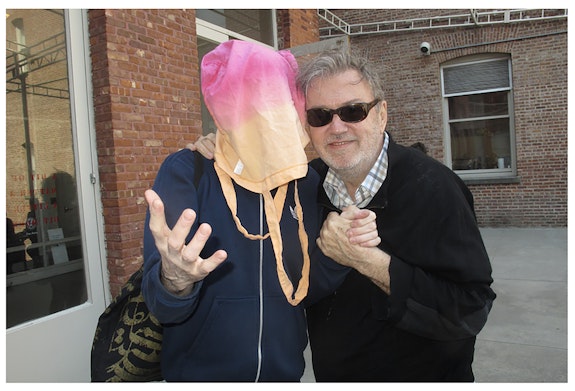
Seydou Keita
Thomas Ruff
Christopher Williams
Danny Lyon
Philip-Lorca DiCorcia
Rineke Dijkstra
Pierre Verger
Nan Goldin
Tracey Moffatt
Dawoud Bey
Nick Waplington
Collier Schorr
Wolfgang Tillmans
Gilbert & George
Walker Evans
Thomas Struth
Boris Mikhailov
Gregory Crewdson
Ben Vautier
William Eggleston
Bernard Faucon
Man Ray
Richard Prince
Brian Eno
Wendy Ewald
Ari Marcopoulos
Shirin Neshat
Vito Acconci
Samuel Fosso
Malick Sidibé
Catherine Opie
Tammy Rae Carland
Raymond Foye

This photo shows how Diego Cortez looked when I first met him in 1980. He’d moved out of his punk phase and had begun wearing Armani suits when they were the new cool thing, and quite beautiful. Diego never stayed in one phase for very long. I never even knew he’d had a career as a performance artist until many years later. These photos were taken in his tiny studio apartment at 33 West 9th Street, a townhouse owned by Henry Geldzahler, whom I lived with for several years in the early ’80s. Diego’s apartments and lofts were many throughout the years because he was restless, and careless when it came to what one might call “the necessities.” All of his living spaces (be they humble or grand) were always a master class in the art of living: great paintings, decorative art, furniture, and books. Aesthetics were a fundamental and indispensable part of life, and there was a rigorousness to this part of his sensibility that went far beyond appreciation or good taste.
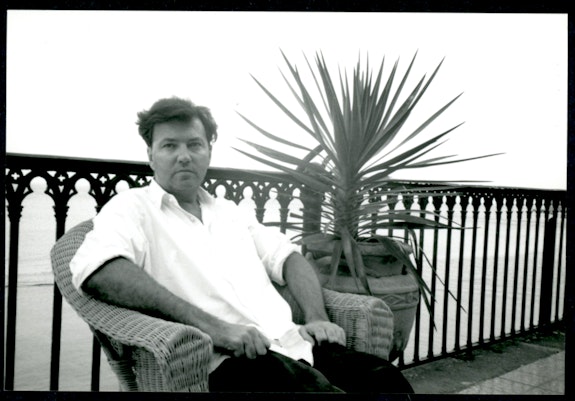
I was completely in awe of him from the start. He was extremely handsome, incredibly intelligent, and outrageously funny. He would say anything to anyone at any time, and he always had a witty retort. His ideas were entirely his own. Most importantly, he seemed to hold the key to the Holy Grail that every astute young person wants to know: how to earn a living without having a job.
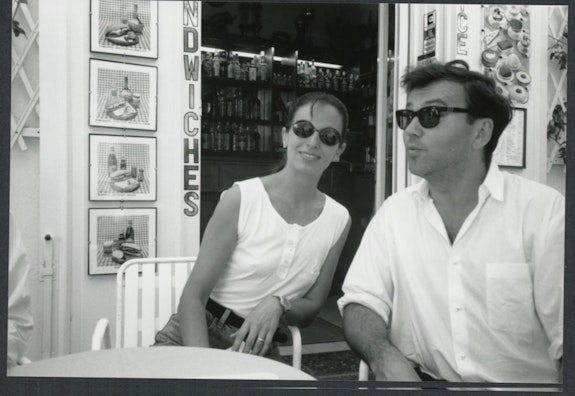
Diego showed up at Henry’s apartment one day in 1980 when he was planning his famous New York/New Wave show at PS1. He was in something of a panic because a major part of his funding had fallen through, and the show was in jeopardy. He needed 10,000 dollars, a considerable amount of money in those days. Henry was the NYC Commissioner of Cultural Affairs, with a budget of about 35 million. But as commissioner he only had the power to give discretionary grants up to 10,000, and those were subject to audit. Diego laid out his proposal for the show, room by room, discussing the artists and their importance to the moment. When Diego left, Henry said, “That’s the most talented person I’ve met since Dick Bellamy.” (Bellamy was famous for being a great talent scout in the art world, a category in which Henry himself was no slouch.) Henry gave Diego the 10,000, something he only did twice as Commissioner. (The other occasion was a grant to Anthology Film Archives to pay for the completion and screening of Harry Smith’s masterpiece Film #18, Mahagonny.)

Diego and Henry would meet most early evenings and discuss what they’d seen that day, in the galleries and the artists’ studios. They would look at the many catalogs Diego brought back from his travels in Europe. They were educating each other: what was new, what was good, and why? Diego didn’t have the kind of formal training Henry had (Harvard, Yale, the Sorbonne), and Henry by his own admission had lost touch with new art. Henry was a painting guy, and a decade of earth/conceptual/body art left him cold. Henry always credited Diego with making possible his second act in the art world. Within a year or two he’d left his job as Commissioner to take a curatorial position—at PS1.
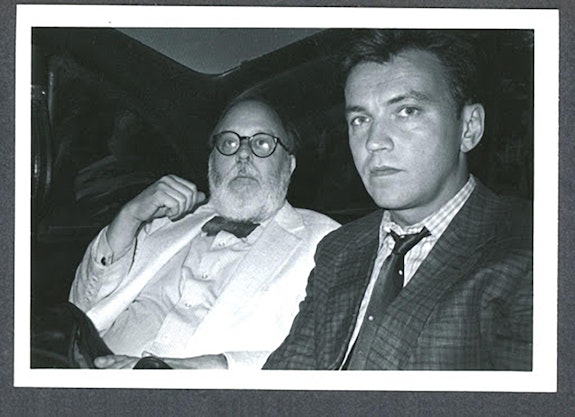
Most evenings we’d attend events and openings, followed by dinner at the Odeon, and then the clubs. But Diego was always up early the next day, working on his current projects, and there were many, as his online CV attests. He was one of the most widely read people I’ve ever known, and one of the few people I knew who could actually make theory seem both essential and interesting. Diego used the Semiotext(e) loft of Sylvere Lotringer as one of his work spaces. He co-edited their “Autonomia: Post-Political Politics” issue, and he was in communication with all the important European theorists of the day. Thinking about Diego in the weeks after his death I came to see his entire life as fundamentally a critique of the art world, loving and enthusiastic, but also precise, severe, and censorious.
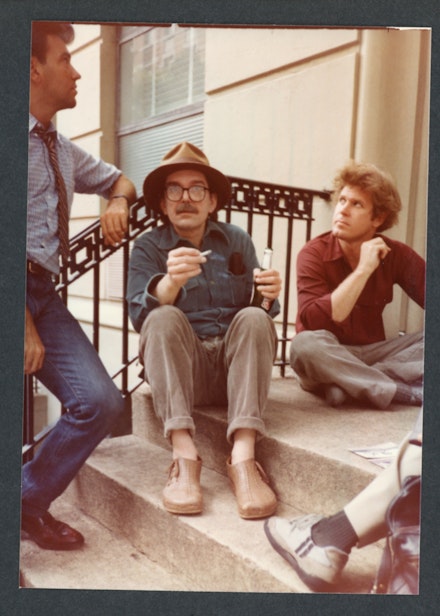
In 1985 we drove to Orono, Maine for a three-day Ezra Pound conference, and spent time with Olga Rudge. In the evenings we dropped acid and attended the local fair. Always an ideal guide in any circumstance, Diego was my favorite person to take LSD with. It was the place where all his best qualities flourished. He was completely at ease with the zooming freedom of the experience, receptive and open to every state that might arise, from the alien weirdness of small town America to the cosmic joke of the universe.
Mostly I remember his generosity, the twinkle in his smiling Irish eyes, the lilting rhythm of his sentences that usually ended in a laugh that acknowledged the folly of, well, everything. I think of the many summers in Capri, his beloved Seville during Holy Week, drinking rum in a tiny bar in the Puerto Rico rainforest of El Yunque, a short drive from his house in San Germán. Visits with Cy Twombly in Gaeta; concerts by Miles Davis, Nina Simone, the Talking Heads, Martha Argerich. Poetry readings by John Wieners and Gregory Corso. Driving to Chicago and back with a stack of Dylan tapes. Staying at the Hôtel Eden au Lac in Zurich for Jean-Michel’s openings (Jean never called Diego anything other than “Jim”). I think Diego viewed the art world as essentially a criminal enterprise, and often acted accordingly. But after all, those lunches had to be paid for somehow. I remember once when my austere New England side got the better of me and I questioned all this dazzling excess. His voice lowered and his eyes narrowed and he fixed me with a kind but firm gaze: “Darling, you only live once.”

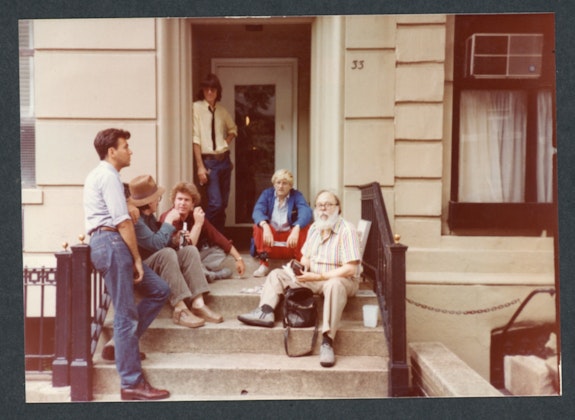
Robin Winters
Diego Cortez was an artist the entire time I knew him. Some people might want to say he quit making art and that he became an art dealer. I would say that all of his various contributions were part of his “art practice.” Like Joseph Beuys supporting the work of his student Blinky Palermo (and giving him his name), Diego was constantly promoting and producing the work of others, as well as making his own work, often in a musical format, and being a living fiction.
I remember how mad some of my Colab friends got when Diego and I were on a panel at Hunter College and I claimed that Colab had hired me as an actor not unlike Allen Midgette playing Andy Warhol. Then Diego piped in, “wasn’t that the same year we got married?”
Mr. Cortez was one of the most generous and supportive people I have known, always at the service of “the work” but never willing to put up with anyone’s bullshit.
Some people thought he was a criminal and a thief, but then again I have always loved Genet and Gregory Corso.
Of course I have so many more names and moments.
I have many photos Diego gave me by Jimmy DeSana.
A Steve Kramer drawing from the Batman show.
Meeting Bob Kane while organizing the Batman show. He looked more like Alfred the Butler in a smoking jacket working on a portrait of Sigmund Freud.
Giving the front room of my studio to Duncan Smith while he worked on texts for Diego’s Private Elvis book and his writing The Age of Oil.
Jean-Michel Basquiat drawing superheroes on the floor while we were installing the Batman show.
Hanging out with Tennessee Williams at Phebe’s.
Diego holding the microphone cords and doing the sound for my performance when I was totally immersed in freezing water at the old Artists Space on Wooster Street.
Helping David Bowie move furniture.
Having pasta with Phyllis Galembo and Curt Hoppe.
CBGB, The Local, Max’s Kansas City, One University Place, The Odeon, Balthazar, Prune, etc.
This is a letter I sent Diego Cortez c/o his sister Katherine when he was in hospice:
Dear Jimmy,
It might surprise you to know that this morning I am listening to a combination of Enrico Caruso “Una Furtiva Lagrima” and Yusef Lateef “Poinciana” and Laura Nyro “Stoned Soul Picnic.” I alternate back and forth between songs.
I found a Kathy Acker interview with Sylvère Lotringer that mentions You, Me, Betsy Sussler and Michael McClard all as “artists” then she says she is not an artist hahahaha.
Art or no art I don’t care. Things are things and everything is a time capsule.
I have enjoyed our time together immensely! So many memorable moments.
I will mention some knowing that you have a huge disdain for nostalgia so I hope you won’t hear this as some sort of old dim reminiscence.
Swimming in Frank Stella’s pool while listening to Jonathan Richman’s “Road Runner”
At the Ocean club sitting with Tina Weymouth from the Talking Heads who you tried to set me up with.
Drinking “mother in law’s milk” latte di suocera grappa with Nicholas Ray.
Crawling through the garbage to sneak into a party at the Copacabana. We fall through the doors along with some garbage and land at the feet of Andy Warhol.
Waking up from a terrible binge to you bringing Nicholas Logsdail, the English art dealer, to look at my work.
Thanksgiving at Debbie Harry and Chris Stein’s house with Anya Phillips and Coleen Fitzgibbon.
Riding in a limo to take me to the airport for a gig at Hallwalls when Cindy Sherman and Robert Longo still lived in Buffalo with Norman Fischer who was holding a flower the entire time.
Every dinner and lunch and breakfast we have ever had and the cast of characters that went with those meals.
I have an early drawing or two of yours in my drawing files. I suppose I could have framed you with them before this but now I will probably just frame them.
I’m not sure what memory and remembrance is about or what it is worth, but you should take some satisfaction that multitudes are in the midst of a memory storm about their moments with you.
I know you have already witnessed this phenomenon with Jean-Michel Basquiat and others so you know what it is.
The thing that is beautiful is that we were actually friends and I thank you for an amazing ride.
I know sometimes you had to drag me along complaining. “The pressure to paint? That’s a terrible title and besides didn’t those people murder Mark Rothko?’
New York/New Wave? Ok Jean-Luc.
Lol
I love you honey bunny
xxx
Robin
Russell Lord
It was with great relief that I learned that Diego Cortez approved of my hire. I had just recently arrived in New Orleans to take over the role of Freeman Family Curator of Photographs at the New Orleans Museum of Art that he had held briefly, and I was about to meet him for the first time. Diego was never well-suited to an institutional position, and everyone knew it—including him. His restless intellect and nomadic soul required an unfettered existence, free of institutional restraints and, dare I say it? … accountability. Still, I wasn’t sure he would see my hire as a welcome change. And I really wanted him to. Even though I hadn’t met him, I certainly knew who he was through his tireless championing of artists in the 1980s and ’90s; through his charming but commanding direction of collectors; through his vast network of artists and thinkers from the worlds of film, photography, music, and painting; and also, of course, through the excellent series of exhibitions he organized for NOMA before I arrived. When we met in my (his) office 10 years ago, he suspiciously cast his eyes over the collection of books I had brought with me and recently arranged on the shelves. It is telling that it was a group of philosophy books, and not the far larger selection of art books, that gave him a favorable opinion of me. From that moment, I was under his wing, so to speak, and was ushered into his world, which made me an almost weekly recipient of his ideas and recommendations for artists (many of whom are now part of the collection) and exhibitions (one of which, a show of the work of Timothy Duffy, we really produced together). One almost has to exercise one’s brain to keep up with him, and even when you think you’ve made it, the playful contrarian in him would still manage to derail your train of thought, in the best possible way. I can’t say every conversation, lunch, email exchange, etc. was easy, but they were always rewarding and inspiring. He was prone to bombastic statements (“The 20th century is all about collage”) that, even when indefensible still got the train chugging along again in the best possible way. He was also an unabashed capitalist, a refreshingly honest position to take in a field that takes great pains to hide its basest machinations. When a group of curators lamented that the fast-rising prices for contemporary art had put them out of the game, Diego proudly and defiantly stated that he was doing his best to bid things up at auctions. His absence creates a vast hole of artistic and intellectual energy that will truly never be replaced. He was cantankerous, opinionated, generous, supportive, funny, insightful, clever, and could even, on occasion, be kind. His chosen existence in his later years—living from one big artist sale to the next—meant that he was sometimes flush with cash, and sometimes totally broke. Regardless of his financial state, his vast network stuck with him, which tells you both about the depth of his friendships and his own charm. I will miss him dearly.
Saul Levine
Seth Tillett
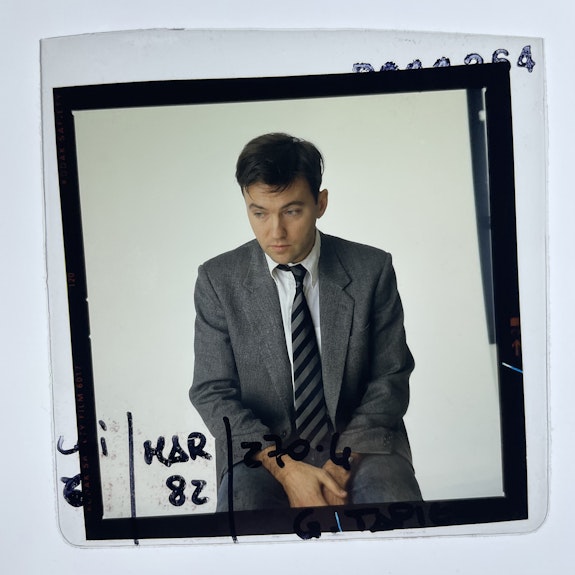
In 1979 I went to Italy with Lizzy Mercier Descloux to make a film about Autonomia Operaia. To this end we dragged over the latest technology, a huge B/W reel-to-reel video recorder built by Sony and hilariously marketed as “portable.” Upon arrival we quickly learned that, far from wanting a film made about them, or any visual attention whatsoever, AO was fanatically devoted to invisibility. They were building an anti-spectacular political movement diametrically opposed to the Red Brigades, whom they viewed as creatures of the Italian state. They saw spectacular terror actions, like the kidnapping of Aldo Moro, as deliberate false flag operations pulled off to enable the state to arrest and jail the true revolutionaries of AO, which they did, by the hundreds. Meanwhile Autonomia Operaia had no hierarchy, no logo or symbols, and no public face, a condition they cultivated skillfully. “We are everywhere and nowhere, and so there is nothing to see. Your film is already finished, it is here, under this bed,” “Bifo” Berardi told me, “and you will never see it, much less show it. Go to the Red Brigades if you want political show business!” Perfect. A subject that refused to be filmed. A picture about invisibility. Now I was in. We shot interviews with artists and personalities, Renzo Rossellini, Fabio Sargentini, Felix Guattari, Franco Piperno, Pino Pascali, and others, and we collected images and documents wherever we could find them.
By now the inability to find Aldo Moro, either his kidnapped self or his body, came to signify for me the occluded object itself. And this irony got me searching for pictures that would communicate sightlessness, vain searches, the inverted spectacle: cops poking ski-poles into frozen lakes and caves in the hills, striking AP photographers with cameras at their feet, Anna Magnani crying over the phone to a lover we never see. When I returned to NY, Diego was struggling with the illustrations for the AO issue of Semiotext(e). Of course he was; there were none. Just as I had contributed at the last minute to the earlier “Schizo-Culture” issue, Diego now asked me if I had any pictures with which I could bail him out, and I, never one to refuse him anything, allowed him to raid my files. As usual I could have cared less about public attribution. Diego had already given me so much. Our life-long economy of reciprocal gifting was entirely private. I had only one caveat. “Don’t use the hand silhouette of the P38 pistol that everyone associates with AO.” I insisted. “They don’t want it used to represent them. Anyway, that’s my hand.” Of course Diego reproduced it prominently.
Stephen Torton
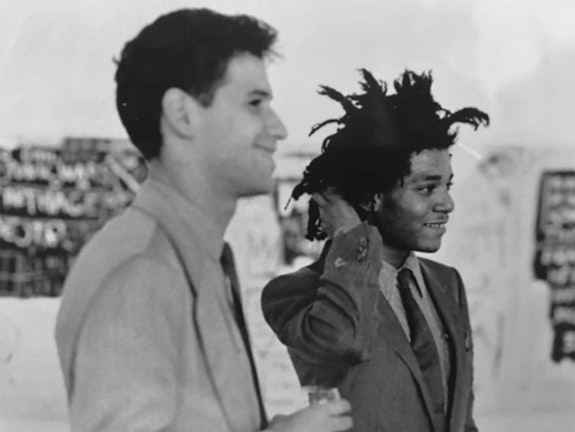
I was working as a doorman for a building on the Upper West Side, and I made 6,000 dollars in tips over Christmas 1979, so I decided to buy a loft. It sounds crazy, but in those days spaces were cheap, especially if you bought raw space and could do the carpentry yourself, building out the loft, and that’s what I did. I bought half a floor on 4-6 White Street. By chance the other half of the floor belonged to Matthew Geller, one of the members of Colab. His loft on the sixth floor was where they all met. I had nothing to do with the art world, but one day I wandered in because it seemed like a neighborly thing, and these artists were having a big meeting. Diego was there and he wanted to film the German poet Hans Magnus Enzensberger reading his long poem, The Sinking of the Titanic. Since I was the only person in the room who had a job, I lent him the money. I didn't even know who he was, but it seemed interesting and he made the video. Then I spent the next two years trying to get the money back. So that’s how I met Diego.
After that Liza Béar came up to me and asked if I wanted to put in 1,000 dollars on a timeshare in a video camera. I said yes to everything in those days because I didn’t know much and I was intrigued. That was one of the cameras that was used to film Glenn O’Brien’s TV Party, and that's the camera James Nares used to make quite a few of his works. It was the same camera Seth Tillett took to Italy to make his film on Autonomia Operaia. It was very large, it was hardly portable.
I was coming home from work one night, taking a back alley from the subway, and because I had my polyester uniform on and a good haircut, one of the doormen at the Mudd Club signaled me to come in. I wasn’t trying to get in, I was just sauntering home. I went into the Mudd Club and that’s how I met Basquiat. In 1980 when Ronald Reagan won the presidential election I moved to Europe in disgust. I went to Paris, to Italy, and to Berlin where I met up with John Lurie, when he was playing with The Lounge Lizards. I returned to New York in late 1981 and got back into construction. I was building a loft for Bebe Smith, on a crew with Tom Otterness and Matthew Geller. John Lurie called me at the job site and said his friend Jean-Michel was having a big party that night and he needed help. I didn’t know anything about Jean’s success in the art world, and I didn’t connect him with the guy I’d met at the Mudd Club. Later I always wondered if Jean remembered me as the guy who he shared a joint with who was wearing a doorman's uniform, because the first thing he said to me was, “I need a doorman, I need a bouncer tonight.” It turned out to be the after-party for Diego’s show at Marlborough Gallery, The Pressure to Paint, one of Jean’s first breakthroughs.
The next day Jean offered me a job building stretchers, and I still had no idea who he was, so I turned him down, but he asked a few more times and eventually he convinced me to work for him. Around my first week of work Diego came by with Henry Geldzahler, and Henry bought the painting Jawbone of an Ass (1982) for 5,000 dollars. After a few more visits Diego began to see me as somebody more than just a doorman. We always had a playful interaction. He was ironic, very quick with the one-liners, and extremely witty. Diego always looked like he was onto something bigger. If you talked to him he would say a profound thing and then walk away. He was not unwarm, he just never stood still long enough.
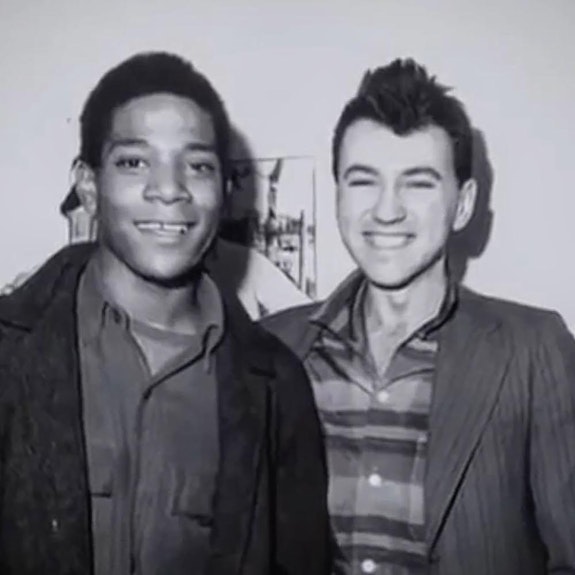
Diego was beginning to be persona non grata around Jean’s studio. Jean was pretty pissed with him because when he started showing with Annina Nosei, Diego had refused to return a bunch of work he’d had on informal consignment. But Diego was extremely tenacious, so I think getting Henry to interview him for Interview magazine and getting James Van Der Zee to make the photograph was a brilliant move, because Jean was just trying to shrug him off and Diego came up with this incredibly brilliant suggestion. It was like a poker game where Diego played a great hand and Jean-Michel said, “Fuck it, he got me.” Because Diego is the only one who could’ve thought of that and pulled it off. Jean was so smart, he knew that even though he was trying to get rid of him, he couldn’t say no.
Jean rented a town car and the three of us proceeded to Van Der Zee’s studio in his Harlem apartment. Both Diego and Jean-Michel were fully aware of the historical significance and magnificent beauty of the occasion. Van Der Zee was 95 and had spent his life documenting the Harlem Renaissance. Jean asked for the same backdrop he had used for Billie Holiday. Seconds before the shot the studio cat suddenly leapt onto Jean’s lap, another little bit of magic. Van Der Zee was legally blind so his wife actually did the mechanics but once the shutter was released he looked straight towards Jean, took the brass cap away from the lens of the huge, wooden 8-by-10 inch view camera and trembled as he was reading and feeling the light exposure. A rather long silence ensued and then he replaced the cap ending the shot.
Jean wore a beautiful Italian suit for the photograph. He was extremely self-conscious and I think he thought about every aspect of everything. He was one of the most calculating human beings I have ever met. He calculated his … I wouldn’t say his demise, but he saw it. He saw a lot of what we’re living through right now, and I don’t think he would be surprised by any of it. I think he was extremely clairvoyant, extremely calculating, and extremely tortured by the fact that he couldn’t free himself up from that consciousness. I think Diego challenged him in a way that very few did. I dare say that Jean was used to being the smartest guy in the room, and I would argue that Diego was one of the very few who could sometimes give him a run for his money.
Diego’s was a different kind of intelligence from Jean’s, because despite his self-aggrandizement and skullduggery, he was always helping everybody else to be an artist. Jean-Michel was not an ungenerous person, but his central subject was himself. I found it very ironic that somebody who was as completely certain of himself and his vision as Diego was, was actually always working to build other people up. They were both very contradictory people. There’s nothing you can really say about Jean-Michel that you can’t say the opposite, and I would say the same is true about Diego. There was an inherent contradiction in almost everything they did. I guess you could say if they were piano players they had a lot of range.
Diego played with ethics sort of like a beach ball, and he kind of laughed at lesser people. I think he was quite an elitist, an intellectual elitist, and he didn’t apologize for that. I’ve always respected the idea that you don’t speak ill of the dead, but my question is, for how long? I think at some point the truth is more important than covering for someone who honestly didn’t even want to be covered for. In any case, the art world has a way of attracting characters like this, and as long as they have talent and something to offer, they are tolerated in a way that they wouldn’t be in a lot of other businesses.
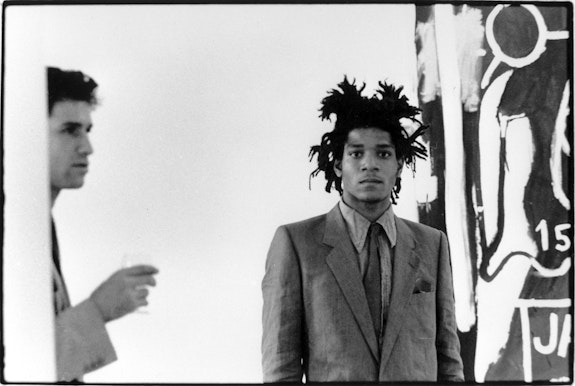
Diego deeply understood the zeitgeist of the early ’80s, the energy that was happening in political theory and in critical theory in Europe, because he was going back and forth all the time. He had first-hand experience of the radical ideas of Autonomia, Deleuze and Guattari, Il Male, Dario Fo, Pier Luigi Tazzi, and so on. And Seth Tillett deserves credit in that department too—going to East Berlin and meeting with the intellectuals on the other side of the Iron Curtain. Diego was really tuned into that energy and brought it into the Downtown art world. He understood how this very powerful political and intellectual rendering of the rebirth of art wasn’t just some abstraction, it had a very tangible message. Italy was a hotbed of radical political theater and Diego connected that to punk and New Wave in New York—not just connected it in his mind, but actually connected all those people. He gave all those suburban kids who came to New York, who were basically just mad at their parents, a much broader intellectual context for rebellion. It wasn’t just angry art anymore.
So this is how I view Diego’s whole project in the art world. He wasn’t financed well enough to do it, but he continued to do it. His main energy was constantly looking for the new thing. That he didn’t manage to be a successful art dealer was one of his successes, because it allowed him to stay fresh. Maybe I overcompensate for the fact that there’s such an immense number of people who have a bill to send him, or a complaint to register. All of his misdeeds, and there were already too many of them, I don’t want them to bury the good parts of him, because it’s not what made him interesting. It’s like talking about Basquiat and drugs: everybody took drugs. There were many dishonest people out there, and we should know the truth, but what Diego should be remembered for was the amazing connections he made. Just before COVID, I traveled around America coast to coast interviewing people for my book, and his name came up constantly, no matter who I was visiting with. It was staggering the influence he had on people’s lives.
One of the last times I saw Diego was at the party following the Basquiat notebooks show in 2015 at the Brooklyn Museum. At one point he started dancing with Maripol, and suddenly the whole dance floor just cleared away. I never knew he could dance like that. He commanded the whole room in the most unusual and imaginative way, every person in the room was watching. Diego always had a sense of theatricality, he knew how to stage things, and he also knew how to have fun. He knew that art was wonderful, and that life was about the now, which is a stupid thing to say but it’s not often obvious. He had fun all the way as far as I can tell. I think that was one of his specialties: making everybody feel like he was going faster than them, and indeed he was.
Timothy Duffy
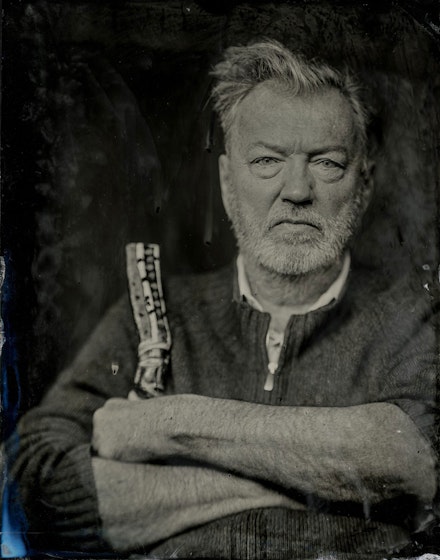
I loved Diego Cortez because he believed in me as a photographer, and because he believed in what we do at the Music Maker Foundation. I first met him when I was working on my first series of fine art photography, a group of tintype photos of the Foundation’s “partner artists,” the traditional musicians we work with every day. I also included photographs of the great southern visual artist Lonnie Holley.
Lonnie’s friend, Matt Arnett, brought Diego with him on the second day of that shoot. Diego was just sitting in the corner, being quiet. I didn’t really know who he was, but he was a very powerful character. So I said, “Hey, can I take your portrait?” When he looked at the portrait, he said, “Hey, this is the best picture ever taken of me. Mapplethorpe didn’t do as good.”
I later learned Diego had moved to Chapel Hill, North Carolina to be closer to his sister. We began having lunch together regularly. He just pontificated. It was like a Cambridge education, talking to Diego on the history of contemporary art. He got really interested in my series of tintypes and called a couple of his friends at the New Orleans Museum of Art, and that’s how the series, called Blue Muse, wound up in a major exhibition at NOMA and a book published by the University of North Carolina Press.
One of my more recent projects is a series of photographs of a guitar maker and artist from eastern North Carolina named Freeman Vines, who made a series of guitars out of the wood from a lynching tree. As I took more photos of Freeman and his work, it was Diego who helped me really understand what I was looking at. The result was a book called Hanging Tree Guitars that has won acclaim from all over the world. I owe him a lot. He was my friend, and I’ll miss him forever.
elin o’Hara slavick
Diego
The piles and box half full of unopened mail,
the room full of books and African statues,
coffee pods, computer fatigue eye drops,
your unmade bed and pill bottles,
tissue packs, spider webs,
a half-read book left open with your
last notations and underlinings—
two file cabinets full of receipts,
identity papers, photographs,
documentation of a life long lived,
spent looking at, writing about,
curating, collecting, and dealing art
like a deck of surrealist cards
that forgot how to dream,
how to tap into the automatic subconscious
and remembered how to die.
You have shrunk to half your size.
We lean in close to hear your voice
speak of your new form biography,
conspiracies and a desire to know
if it’s possible to step across and out
of your withered hospital room
and back into our world
where black buddhas sit patiently
or if the only possibility is a giving into death.
We call a lawyer to help you make a will.
We make photographs of everything
in your apartment that is left without you:
Japanese pottery,
a Nelson Mandela light switch plate,
a Jimi Hendrix print,
polaroids of Basquiat and your grandmother,
days of clubs and travel,
famous people and you,
African heads staring at each other all day, beaded, formed,
empty chairs and lonely couches,
ancient strings of seeds and
miniature bronze chimera statues,
the emptiness so full
that there is nothing and everything
in that corner apartment overlooking
the Haw River in Saxapahaw
through tall windows
covered with semi-translucent white blinds
like your cataracts.
I made you a little collage
the morning we came to visit you—
a naked women sprouting plants from her head
with freedom emblazoned across her abdomen
standing in a polka dotted nest.
I held it up to your face
and it seemed as if your eyes
could not register it—
the same eyes that spent days devouring
and photographing my drawers full
of collages.
I read what I wrote on the back
out loud to you:
You are a genius,
we love you,
solidarity and hope.
Like my father, your eyes soften and widen
simultaneously in response.
You have been between surgeries,
hospitals, rehabilitation centers, dialysis
and ambulances for almost a year.
You were unconscious
during the failed insurrection.
Your appetite is gone
(like your laptop and hard drive).
I remember coming out of the hospital
after the birth of my first child
in a state of disbelief
that the world had continued
as it was without pause.
I want to bring you out into an open field
or to a calm island where you may gently
re-enter the world.
My husband scratches
your wounded septic back
as you work to scooch an inch.
Your hands are cramped.
The feeding monitor repeatedly beeps.
You call the nurse.
She reminds you of your dialysis
scheduled for this afternoon.
Because your sacrum wound is too painful,
and you cannot sit up
for the duration of dialysis,
you cannot be sent to hospice.
You have decided to stay in the hospital
for a few more sessions of dialysis
so that you can “get your affairs in order”.
Things. Accounts. Assets and liabilities.
Balances. A will. Art. Books. Friends.
(All we want is to be with the ones we love.)
How easy it is to displace sorrow
and frustration onto inanimate objects
when we face mortality.
If I could, I would wheel you out into the sun,
to wherever you want to be.
to say goodbye.
Instead, I can’t sleep thinking about
your bottles of imported olive oil and sea salt,
limited-edition vinyl, framed gestures,
most valuable and kept books,
(Years ago, I photographed every shelf of your books
before you sold them to a Los Angeles collector.)
ceramic and delicate glass cups,
white blossom plates,
a tall fragile abstract vase,
the out of reach boxes and stacked stuff
on top of shelves full of
heavy text and images,
souvenirs, letters, fetish objects,
closets full of more
but not enough, nothing to save you.
Now you are in hospice
at your sister’s house,
your slim hospital bed set up
facing the front yard window
so you can look at the
hundred-year-old magnolia tree.
Your skin is delicate.
It hurts to be touched.
You say that will be the title
of your self-help book.
Your eyes widen
every time you want to make a joke.
You tell me that you are sorry
that my department was not good enough,
that we could not do more projects together,
that you will be gone when I become big.
You tell me how happy you are
that your sister and I are friends again.
You talk about meeting death
with dignity and grace,
waiting to fall asleep so you can slide
into it without knowing.
You tell us that you did everything
you ever wanted to do in your life —
all of it over 20 years ago.
For the last 20 years you have done things
you swear you would never have done
and it has been fantastic.
You tell us to speak slower and more quietly
and to dim the lights and to raise the lights,
to sit in a chair because standing
distracts you, to leave
for a few minutes so you can rest.
I tell you I love you and that you are a great great man
and you tell me that is enough.
(Diego left this world at 6pm, June 20, 2021 in Burlington, North Carolina)


